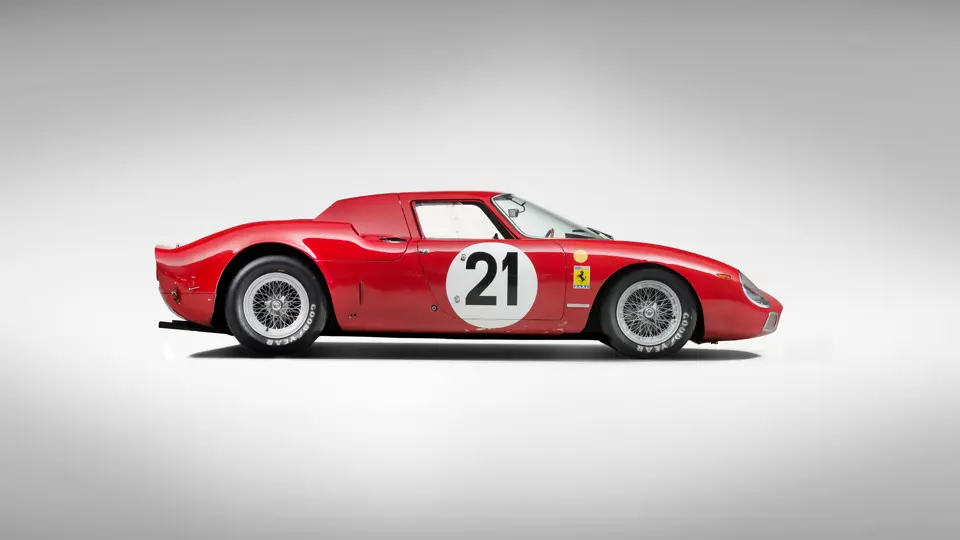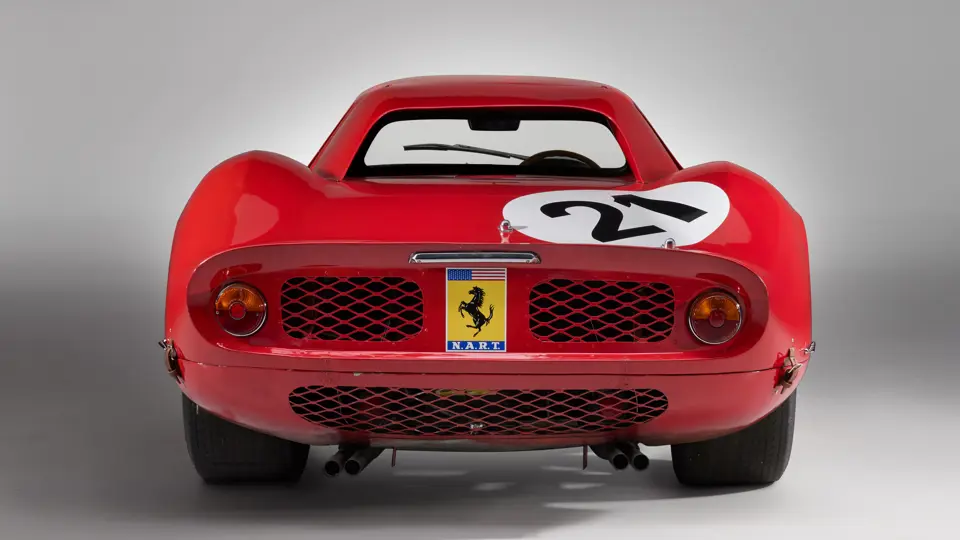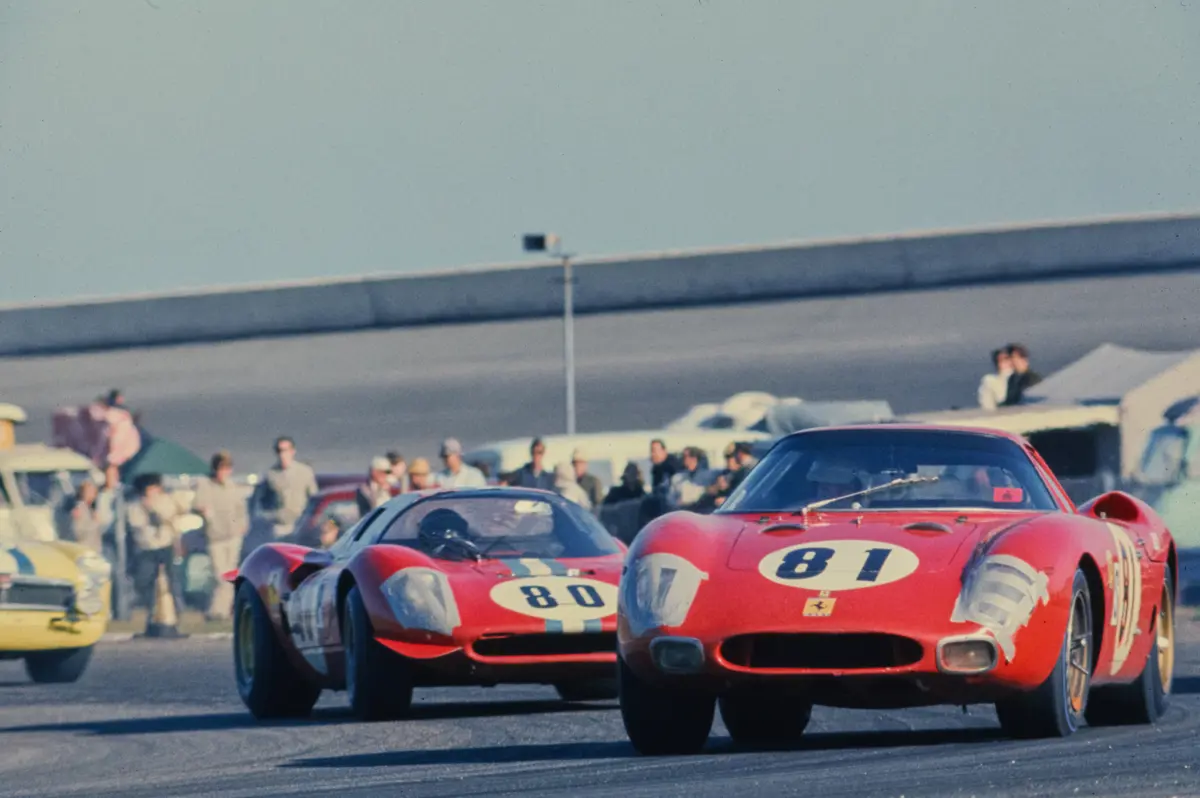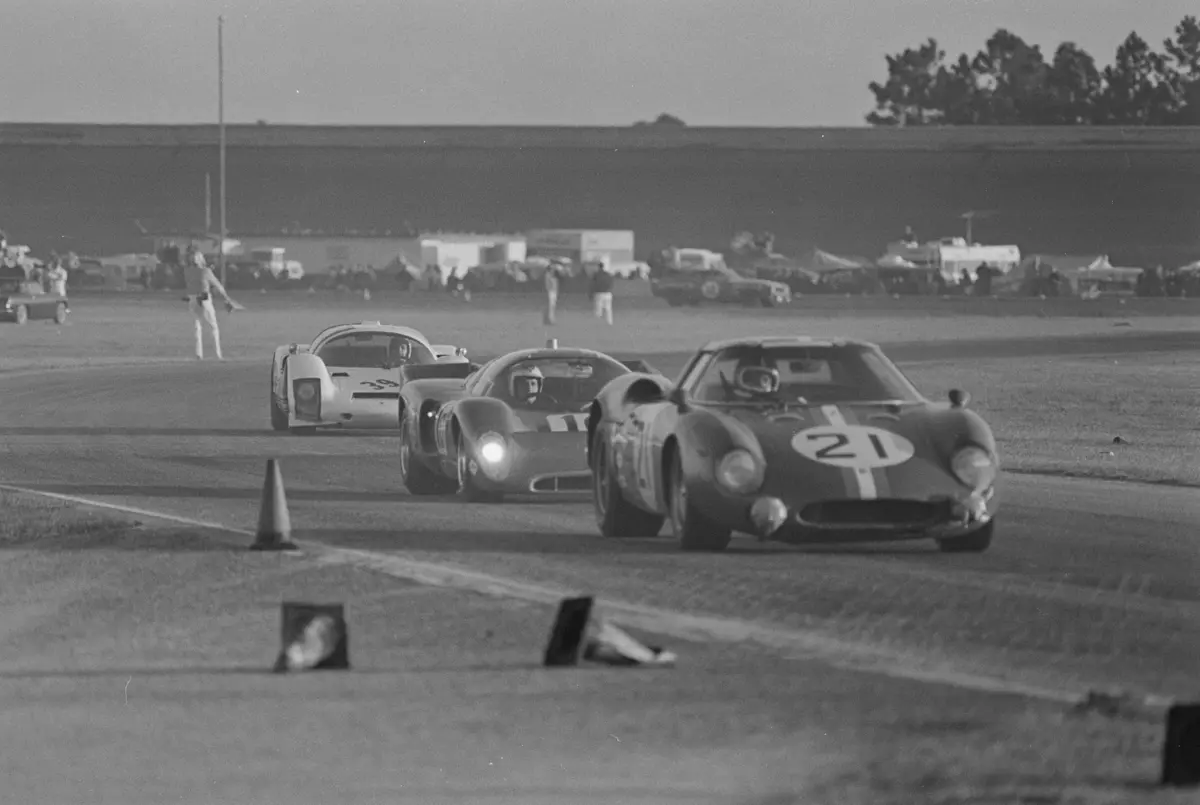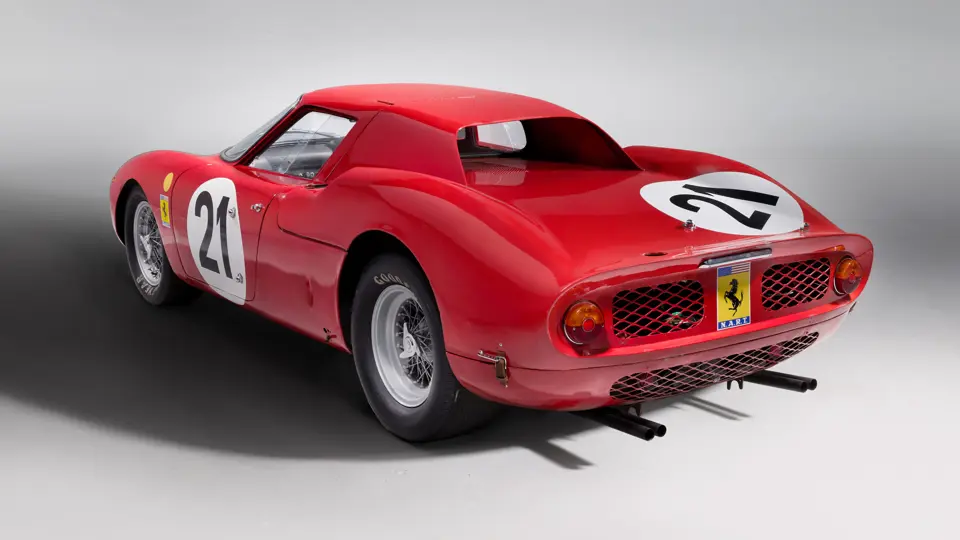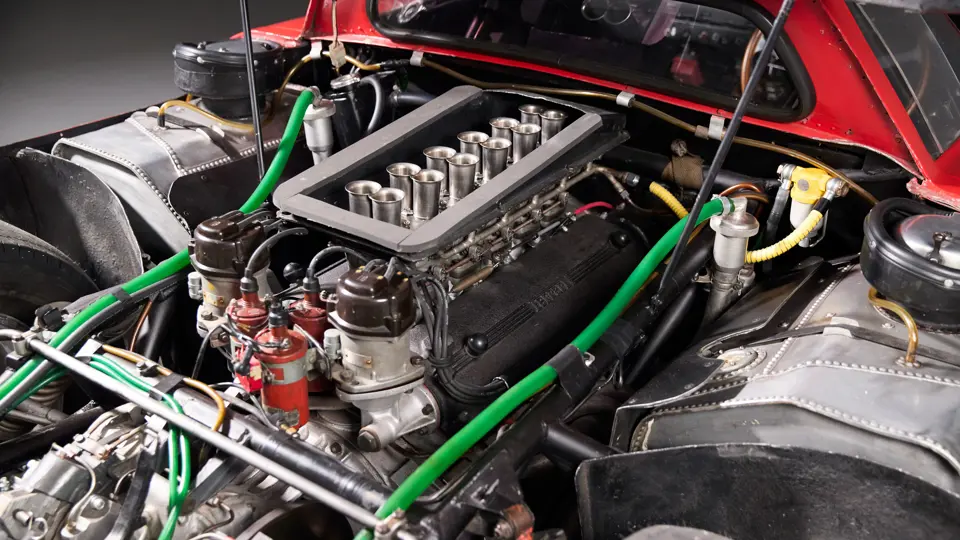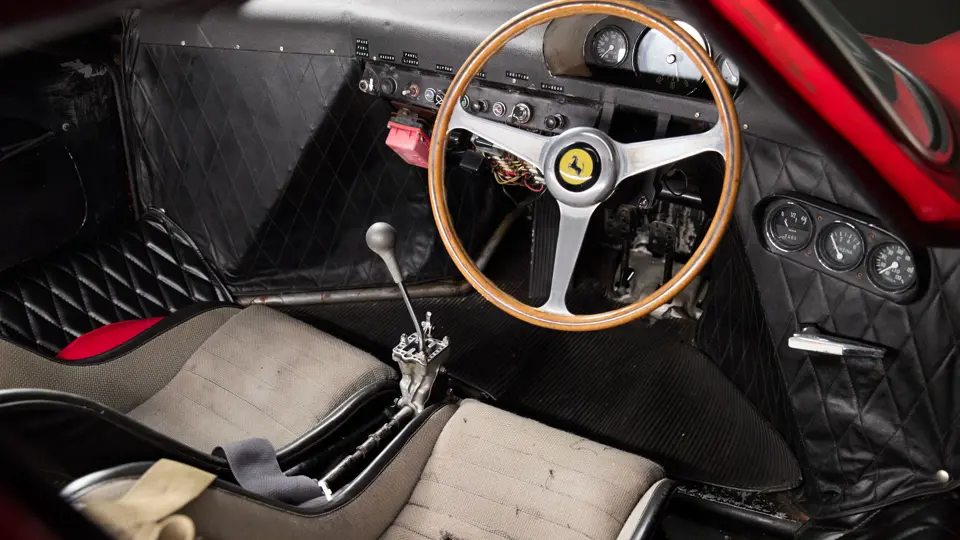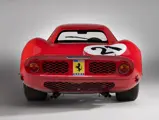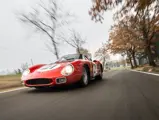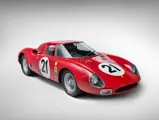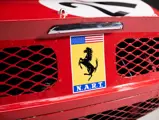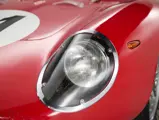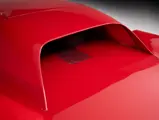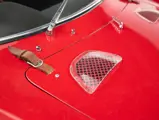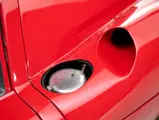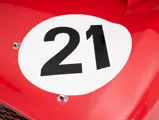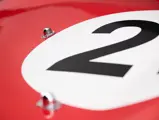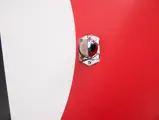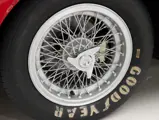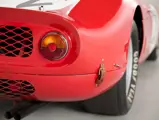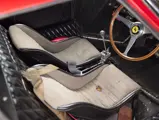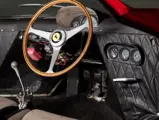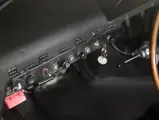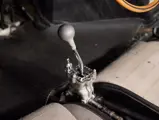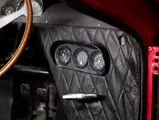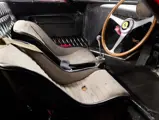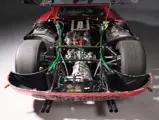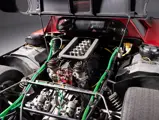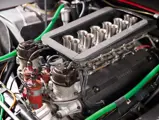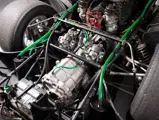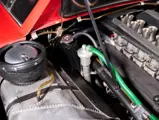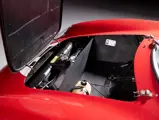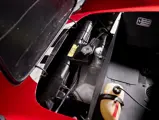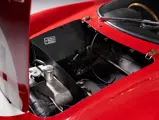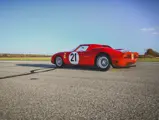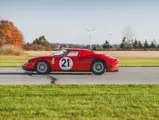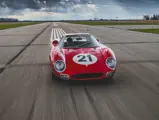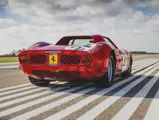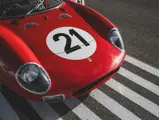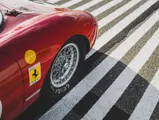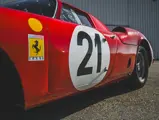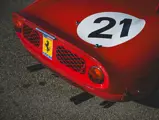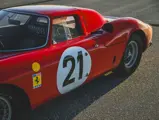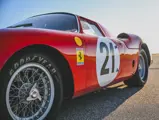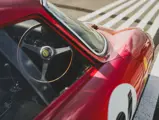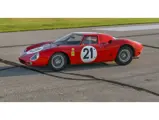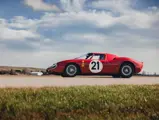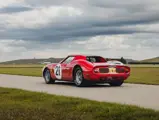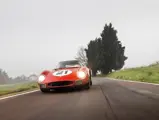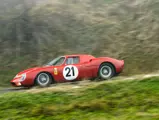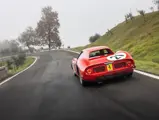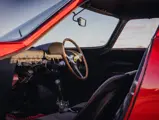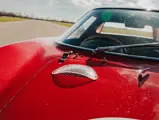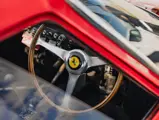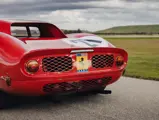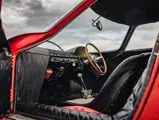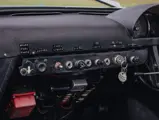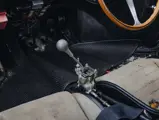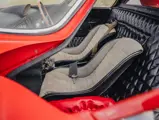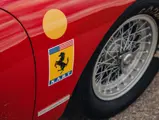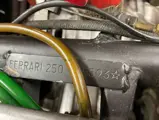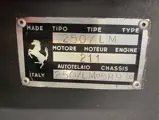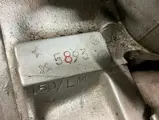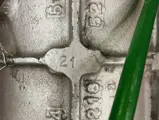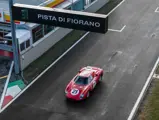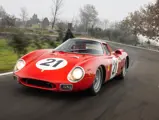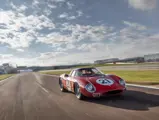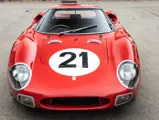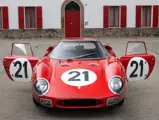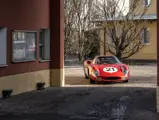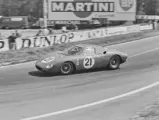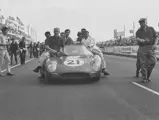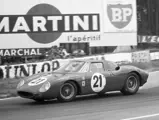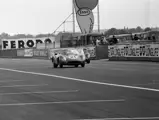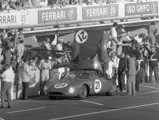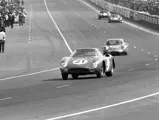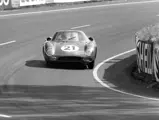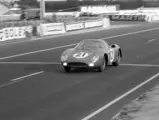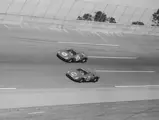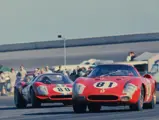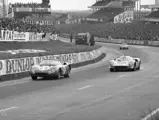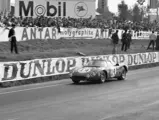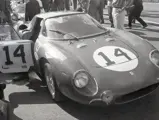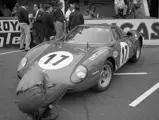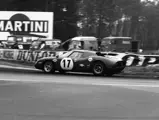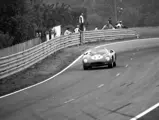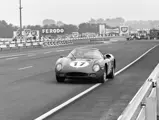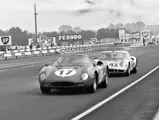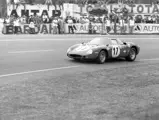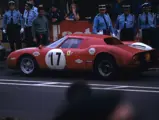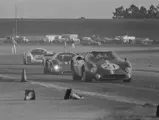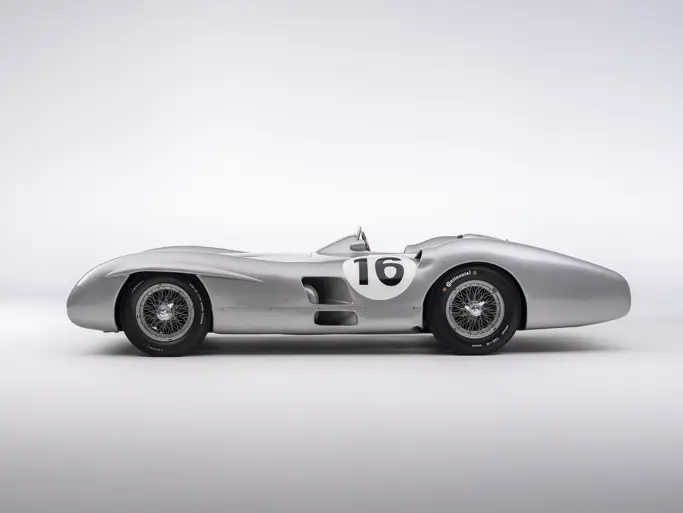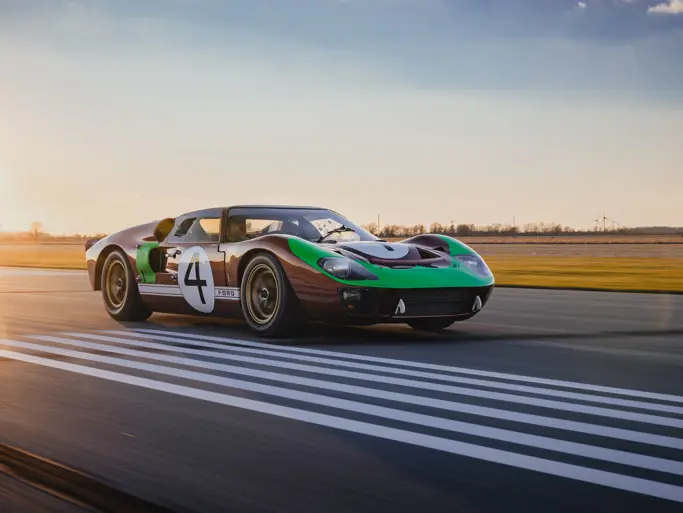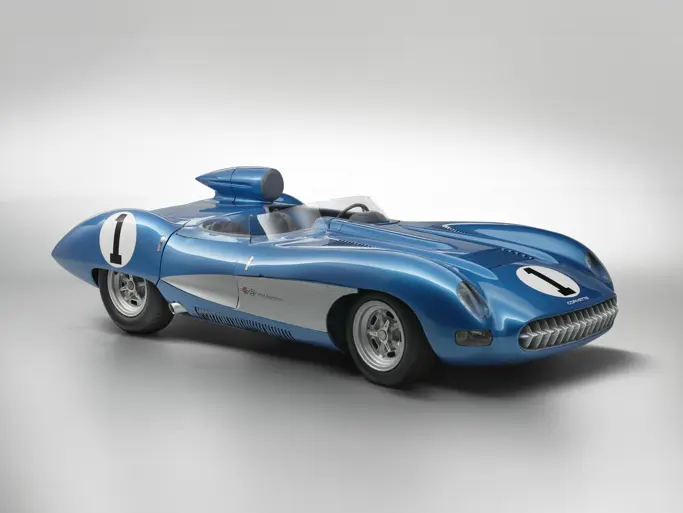LUIGI CHINETTI ET LE NORTH AMERICAN RACING TEAM
Le nom de Luigi Chinetti est synonyme de Ferrari aux États-Unis. Né en Italie, Chinetti est dès son plus jeune âge apprenti dans l'atelier de son père, se formant aux techniques d'usinage pour obtenir à 14 ans son diplôme de mécanicien. A peine deux ans plus tard, il démarre une carrière chez Alfa Romeo où il va rencontrer le jeune pilote de course Enzo Ferrari — forgeant avec lui un lien étroit qui va perdurer tout au long des années futures.
Au début des années 30, Chinetti entame sa propre carrière de pilote automobile et se fait un nom en courses d'endurance. Les 24 Heures du Mans correspondent à sa réussite la plus marquante car il participe à toutes les éditions de 1932 à 1953, pour Alfa Romeo, Talbot puis Ferrari, la marque de son cher ami Enzo. Ses résultats y sont très impressionnants : il gagne en 1932 et 1933 pour Alfa Romeo avant d'apporter en 1949 à Ferrari sa toute première victoire au Mans — qui correspond aussi à la première participation de la marque à cette course légendaire. En plus de ses succès dans la Sarthe, Chinetti remporte les 24 Heures de Spa en 1933 au volant d'une Alfa Romeo puis en 1949 avec une Ferrari ; les 12 Heures de Paris en 1948 et 1950, les deux fois aux commandes d'une Ferrari ; et il prend quatre fois le départ des 3 380 km de la Carrera Panamericana qu'il remporte en 1951 et qu'il termine troisième en 1952, chaque fois avec une Ferrari.
Chinetti déménage aux États-Unis lors de la seconde Guerre Mondiale et se fait engager chez Pratt & Whitney avant de participer à l'effort de guerre sur les moteurs Rolls-Royce, chez J.S. Inskip. Il obtient au début des années 50 la nationalité américaine, avec le parrainage de Zora Arkus-Duntov. Après s'être retiré de la compétition, il se tourne vers la vente d'automobiles, activité qu'il a déjà pratiqué en parallèle. Il devient importateur Ferrari pour l'Amérique du Nord, d'abord basé à New York avant de déménager à Greenwich, dans le Connecticut. Les relations qu'entretient Chinetti avec Enzo Ferrari lui permettent un lien direct avec la direction de l'usine et c'est grâce à cette connexion, et à la considération dont il bénéficie à Maranello, qu'un nombre significatif de Ferrari de course importantes vont franchir ses portes, plus que celles d'aucun autre distributeur de la marque.
En 1957, Chinetti crée le North American Racing Team (NART). Cette équipe constitue un important prolongement de ce qu'accomplit la Scuderia Ferrari sur les circuits pour remporter de précieux points au Championnat du Monde, en catégorie Prototype et GT. Les équipes nationales connaissent toutes leurs moments de gloire avec Ferrari, mais le NART les dépasse d'une tête. L'équipe remporte au fil des ans de brillants succès en courses d'endurance, participant même aux épreuves américaines, canadiennes et mexicaines. Ainsi, le NART de Chinetti attire les pilotes les plus en vue et reçoit les meilleures voitures de Maranello. L'équipe se montre extrêmement précieuse pour promouvoir non seulement Ferrari en Amérique du Nord, mais aussi la concession de Chinetti où les victoires en compétition attirent la clientèle.
L'équipe du NART participe pour la première fois aux 24 Heures du Mans en 1957 et, au cours de presque un quart de siècle de compétitions, elle va engager quelque 70 voitures dans la plus célèbre course d'endurance du monde. A ce jour, aucune équipe autre que la Scuderia Ferrari elle-même n'a inscrit autant de Ferrari aux 24 Heures du Mans et, sur toutes les machines du NART ayant pris le départ, il en est une qui se distingue tout particulièrement...
FERRARI EN MAÎTRE DU CIRCUIT DE LA SARTHE
Le Mans : le test ultime de l'homme et de la machine. Aucune course au monde ne vaut autant de considération à ceux qui terminent sur le podium et, a fortiori, au vainqueur au classement général. Parmi les concurrents ayant couru sur le circuit de la Sarthe au cours des 101 ans de son histoire, Ferrari, avec ses 11 victoires, fait partie des plus titrés de la course d'endurance la plus éprouvante du monde.
La première victoire de Ferrari au Mans a lieu en 1949 avec une 166 MM engagée par Lord Selsdon, avec comme copilote Luigi Chinetti. Celui-ci effectue une performance remarquable en tenant le volant pendant presque 23 heures — un extraordinaire exploit, difficile à imaginer. La deuxième victoire de la marque au Mans, qui correspond aussi au premier engagement de la Scuderia Ferrari elle-même, est signée en 1954 par José Froilán González et Maurice Trintignant à bord d'une Ferrari 375 Plus. Jaguar domine les trois éditions suivantes avec sa Type D, le meilleur résultat de Ferrari étant une troisième place en 1956 avec Oliver Gendebien et Maurice Trintignant à bord d'une Ferrari 625 LM. En 1958, la Scuderia Ferrari triomphe à nouveau au Mans avec la Ferrari 250 TR58 pilotée par Phil Hill et Oliver Gendebien. L'édition suivante, en 1959, voit Aston Martin remporter les deux premières places avec la DBR1, les Ferrari 250 GT occupant les quatre suivantes.
La concurrence est toujours rude et certains des plus grands constructeurs automobiles mondiaux participent à la course — mais à l'aube des années 60 Ferrari se prépare à enchaîner au Mans une série de succès comme on en a rarement vu.
Les cinq ans de domination de Ferrari commencent en 1960 avec un impressionnant doublé : victoire de la 250 TR59/60 de la Scuderia Ferrari confiée à Paul Frère et Oliver Gendebien, et deuxième place pour la 250 TR59 du NART, entre les mains d'André Pilette et Ricardo Rodríguez. Quatre autres Ferrari se classent dans les dix premiers. En 1961, Ferrari écrase la concurrence avec les trois premières places et la victoire de Phil Hill et Oliver Gendebien à bord d'une 250 TR61 de la Scuderia Ferrari. Hill et Gendebien répètent leur exploit en 1962 avec une Ferrari 330 TRi/LM, suivie par deux 250 GTO, deuxième et troisième. En 1963 Ferrari gagne à nouveau avec la 250 P de la SEFAC pilotée par Lorenzo Bandini et Ludovico Scarfiotti, les cinq places suivantes étant également occupées par des Ferrari.
Cette victoire — la quatrième d'affilée — place Ferrari au niveau de Bentley et Alfa Romeo pour le plus grand nombre de victoires consécutives au Mans. Mais ce seuil est dépassé quand Ferrari remporte la course en 1964 avec Jean Guichet et Nino Vaccarella aux commandes d'une 275 P de la SEFAC, la voiture qui a déjà gagné en 1963. Deux 330 P terminent en deuxième et troisième position, et trois 250 GTO se classent dans les dix premiers. Cette impressionnante cinquième victoire donne le ton de l'édition 1965, Ferrari défendant la plus longue série de victoires consécutives au Mans.
LA 250 LM : UNE 250 GT POUR LE MANS
A partir de la saison 1960 de Formule 1 où Ferrari adopte un moteur central-arrière pour ses monoplaces de Grand Prix, Maranello ne va cesser de développer cette architecture. Ainsi, Ferrari l'applique aux prototypes Dino de petite cylindrée du début des années 60 avant d'installer un moteur V12 aux spécifications Testa Rossa à l'arrière d'un prototype, donnant naissance à la légendaire 250 P qui va remporter les 24 Heures du Mans 1963.
Au milieu de l’année 1963, Ferrari cherche à remplacer la 250 GTO et Enzo Ferrari arrive naturellement à la conclusion que la 250 P pourrait être transformée en une formidable Berlinetta de catégorie GT. Une version légèrement modifiée du châssis 250 P est alors équipé d'une carrosserie Scaglietti à toit surbaissé et montants arrière effilés.
Après avoir présenté officiellement la 250 LM au Salon de Paris 1963, Ferrari peine à obtenir l'homologation de la FIA, en particulier lorsque le moteur de 3 litres initial devient une version 3,3 litres à carter sec et simple arbre à cames en tête du V12, désigné en interne comme type 211. Déçu du refus de la FIA, Enzo Ferrari se désintéresse de la 250 LM et alloue la faible production à des pilotes privés plutôt qu'à une utilisation d'usine. Ce faisant, la 250 LM devient la première Ferrari à moteur central vendue à des équipes privées, ouvrant une nouvelle voie qui a encore cours aujourd'hui.
Produite à 32 exemplaires seulement jusqu'à la mi-1966, la 250 LM constitue aujourd'hui une des Ferrari les plus désirables de tous les temps avec sa technique avancée, son style sensuel et son brillant palmarès en course.
Sorti des ateliers à la fin de 1964, le châssis 5893 est le sixième des 250 LM (par ordre numérique) et il est livré à Luigi Chinetti Motors qui vend ensuite la voiture à Mme Irene Young, de Wilton, Connecticut. Mme Young et son époux, Walter, possèdent aussi la 250 LM n°5901 et, apparemment, la 250 LM n°5893 ne répond pas à leurs besoins immédiats car ils la rendent rapidement à Chinetti. Cette décision va se révéler particulièrement heureuse car, sans elle, cette voiture n'aurait jamais signé son plus bel accomplissement.
De retour chez Chinetti Motors, cette 250 LM est immédiatement intégrée au sein de l'équipe de compétition de Chinetti, le North American Racing Team, ou NART. Au milieu des années 60, le NART fait partie des quatre équipes privées bénéficiant d'une assistance directe de l'usine Ferrari, et elle est incontestablement la plus importante. Au début de 1965, cette Ferrari reçoit le capot plus allongé et aérodynamique réalisé par Piero Drogo, carrossier préféré de l'usine, qui a habillé de nombreux prototypes de la marque.
Aux 24 Heures du Mans 1965, la concurrence est sévère. Elle oppose en particulier Ford et Ferrari, à la suite notamment du cuisant échec de Ford à racheter l'entreprise italienne. L'équipe Ford/Shelby est bien représentée avec cinq coupés Daytona, quatre GT40 et deux nouvelles GT40 à moteur 7 litres. Ferrari engage de son côté 12 voitures, en répondant à la nouvelle Ford GT40 avec les 330 P2 et 365 P2. Cinq 250 LM sont également inscrites, toutes au nom d'équipes nationales assistées par Ferrari. Le NART de Chinetti engage une Ferrari 365 P2, la n°18 confiée à Pedro Rodriguez et Nino Vaccarella, ainsi que la présente Ferrari 250 LM, châssis 5893, sous le numéro 21 et pilotée par Masten Gregory et Jochen Rindt.
Masten Gregory, natif de Kansas City, dans le Missouri, est surnommé à juste titre “Kansas City Flash” et connu pour son allure de jeune homme et ses célèbres lunettes. Il s'est fait un nom en Formule 1 et, pour la saison 1965 qui sera sa huitième et dernière dans cette discipline, il pilote une BRM P57 de l'équipe Scuderia Centro Sud de Modène. Il connaît Le Mans puisque l'édition 1965 correspond à sa dixième participation ; l'année précédente, il a pris part aux 24 Heures pour le compte de Ford Motor Company, au volant d'une GT40 avec Richie Ginther. Jusque-là, son meilleur résultat à la course mancelle remonte à 1961 avec une victoire de catégorie à bord d'une Porsche RS61 Spyder d'usine, partagée avec Bob Holbert.
Jochen Rindt est un pilote prometteur. Il a gravi les échelons de la Formule Junior à la Formule 2, accédant à la Formule 1 en 1964 où il participe fin août au Grand Prix d'Autriche dans l'équipe Rob Walker Racing. Ses talents sont remarqués par Cooper qui l'engage en 1965 pour courir aux côtés de Bruce McLaren. Alors qu'il remportera en 1970 le titre de Champion du Monde de Formule 1, en 1965 il n'est encore qu'un pilote en devenir. Au Mans, ce n'est pas la première fois qu'il est engagé par le NART puisqu'il en faisait partie en 1964 pour piloter une 250 LM (châssis 5909) partagée avec David Piper. Malheureusement, les circonstances l'ont empêché de prendre le volant en course puisqu'après le départ effectué par Piper, leur 250 LM a dû abandonner à cause du bris d'une conduite d'huile. Ainsi, l'édition 1965 correspond à la première participation effective de Rindt aux 24 Heures du Mans.
Gregory et Rindt signent un excellent onzième temps aux essais et se retrouvent entre deux Ford — à 3/10ème de seconde derrière la GT40 n°14 de Ford Advanced Vehicles, pilotée par Innes Ireland et John Whitmore, et devant le coupé Daytona n°9 de Shelby American, confié à Dan Gurney et Jerry Grant. La GT40 MkII n°2 de Shelby American, entre les mains de Phil Hill et Chris Amon, réalise le meilleur temps avec une sérieuse avance de 5,1 secondes sur la Ferrari 330 P2 n°19 de la SEFAC.
Avant la course, la stratégie de la 250 LM du NART est quelque peu discutée. Rindt, pilote rapide, est favorable à un rythme élevé alors que Gregory, plus expérimenté au Mans et probablement conscient de la difficulté de la 250 LM à rester au contact des prototypes Ford et Ferrari, défend une approche plus méthodique et sage. Pendant la course, la 250 LM châssis 5893 tient sa place pendant trois heures entre les mains de Masten Gregory, avant de rétrograder à la 18ème position après la quatrième heure. Les prototypes lui ont pris un tour et la 250 LM occupe la treizième place au cours de trois heures suivantes.
A la huitième heure, les GT40 ont toutes abandonné à la suite de divers problèmes et la véritable difficulté de l'épreuve, le temps lui-même, impacte les performances des Ford insuffisamment préparées pour cette course de longue durée. Les prototypes Ferrari résistent un peu mieux, et trois 250 LM poursuivent leur ronde sans faiblesse. Après 11 heures de course, 5893 s'est hissée à la troisième place derrière la 250 LM n°26 de Pierre Dumay et la 275 GTB récemment homologuée de Willy Mairesse, qui porte le n°24. Ferrari occupe les trois premières places.
Au petit matin du dimanche 20 juin, vers 4 h, Gregory rejoint les stands car le brouillard met à mal sa vision. Cette décision provoque une des anecdotes les plus étonnantes (mais non prouvée) de l'histoire du Mans de cette époque : Rindt étant introuvable lors de cet arrêt imprévu, le pilote américain de réserve Ed Hugus, ancien du Mans et pilote du NART, serait monté dans le baquet de la 250 LM pour terminer le relai nocturne de son ami Gregory. Hugus est en effet inscrit pour la course mais sa voiture n'est pas arrivée à temps, ce qui lui permet de jouer ce rôle de réserve sur 5893. Toutefois, à l'époque de la course, Hugus ne mentionnera jamais cette intervention. L'histoire complète ne sera rendue publique que bien plus tard, à la suite d'une lettre écrite en 2005 par Hugus à Hubert Baradat, passionné des 24 Heures, et publiée dans le numéro d'octobre 2020 de Motor Sport. D'ailleurs, Ferrari attribue aujourd'hui la victoire à l'équipe de trois pilotes.
Quoi qu'il en soit, de la 12ème à la 17ème heure la 250 LM 5893 oscille entre la deuxième et la troisième place. A la 18ème heure, elle est solidement installée en deuxième position, derrière la voiture de Dumay. Une crevaison provoquant des dommages de carrosserie entraîne toutefois l'arrêt au stand de cette dernière, ce qui permet à 5893 de prendre la tête à la 21ème heure. Elle tient cette position jusqu'à l'arrivée et le châssis 5893 engagé par le NART et piloté par Gregory et Rindt décroche ainsi sa première victoire au classement général des 24 Heures — avec cinq tours d'avance sur la 250 LM n°26 de Pierre Dumay et Gustave ‘Taf’ Gosselin, deuxième, et huit tours d'avance sur la Ferrari 275 GTB n°24 de l'Écurie Francorchamps pilotée par Willy Mairesse et Jean ‘Beurlys’ Blaton, troisième.
C'est une victoire inattendue pour le NART et la 250 LM, qui a pris le départ au sein d'une grille de prototypes beaucoup plus puissants. Elle correspond à la première et dernière fois qu'une Ferrari privée remporte la victoire aux 24 Heures du Mans, devant les voitures d'usine de la Scuderia Ferrari. Cet impressionnant triplé Ferrari marque un nouveau record de six victoires d'affilée au Mans pour la marque : la marche inexorable de Ford vers la victoire devra attendre 1966 et, pour encore une dernière fois, la 250 LM prolonge la domination de Ferrari au Mans. Cette victoire est d'autant plus marquante qu'il faudra attendre 58 ans, en 2023, pour que Ferrari renoue avec la victoire sur le circuit de la Sarthe.
24 HEURES DANS UNE JOURNÉE, 24 HEURES DANS UNE COURSE
En février 1966, la 250 LM châssis 5893 est engagée par le NART sous le n°22 à la première édition des 24 Heures de Daytona, où Bob Bondurant et Jochen Rindt terminent neuvièmes. Quatorze mois plus tard, la 250 LM est exposée par Luigi Chinetti Motors et le North American Racing Team au New York Automobile Show de 1967, organisé au New York Coliseum, à Manhattan.
En février 1968, cette Ferrari est à nouveau inscrite aux 24 Heures de Daytona, par l'équipe NART-Harrah Racing. Portant le n°81 et confiée à Masten Gregory et David Piper, 5893 se qualifie avec le huitième temps mais, malheureusement victime d'un accident pendant la course, elle abandonne au 101ème tour. Wayne Sparling, mécanicien du NART, répare la voiture avant qu'elle ne soit expédiée en France pour les 24 Heures du Mans 1968 (décalées au mois de septembre à cause des évènements de mai). Pilotée une fois de plus par Gregory, avec Charlie Kolb comme copilote, la 250 LM 5893 n°14 signe le 29ème temps aux essais mais elle est contrainte à l'abandon au 209ème tour à la suite d'un accident.
Par une sorte de revanche, la 250 LM 5893 apparaît une fois encore aux 24 Heures du Mans de juin 1969, pour le NART qui la confie à l'Américain Sam Posey et l'Italien Teodoro Zeccoli. Elle porte le n°17. Pour une voiture de course, un an est déjà un âge avancé, mais au bout de cinq ans elle est vraiment archaïque tant la technologie évolue rapidement. Malgré cela, l'équipage se qualifie avec le 24ème temps et signe une remarquable huitième place au classement général, véritable témoignage de longévité pour la 250 LM. Et pourtant, la voiture n'a pas encore dit son dernier mot.
Fin janvier 1970, le NART engage la 250 LM pour son ultime course, les 24 Heures de Daytona, où Luigi ‘Coco’ Chinetti Jr et Gregg Young vont mettre en valeur une fois encore les qualités de la voiture. C'est la seule 250 LM inscrite et, sous le n°21, elle se qualifie avec le 44ème temps avant d'effectuer pendant la course une remontée spectaculaire pour terminer à la septième place, superbe résultat qui marque la dernière participation d'une Ferrari 250 LM dans une épreuve de Championnat du Monde. Sept ans après sa conception initiale, la 250 LM est encore capable de tenir tête à des prototypes plus puissants et de technique plus moderne. Mais elle ne peut échapper à son sort et, comme les meilleures voitures de compétition, la 250 LM 5893 est ensuite écartée des circuits.
Peut-être aucune autre Ferrari ne peut se targuer d'une contribution aussi significative au palmarès de Ferrari en compétition. En tant que vainqueur des 24 Heures du Mans 1965, le châssis 5893 présente automatiquement un pedigree presque sans égal. Seules 25 Ferrari ont pris part trois fois aux 24 Heures du Mans et elle en fait partie — en sachant que la plupart d'entre elles sont des machines de l'ère moderne. Ainsi, cette 250 LM est une des six Ferrari produites pendant "l'ère Enzo Ferrari" (de 1947 à 1988) et ayant pris trois fois le départ des 24 Heures du Mans.
Avec en plus trois participation aux 24 Heures de Daytona, cette voiture compte six courses disputées pour le North American Racing Team. Et ce qui est encore plus remarquable, c'est qu'il s'agissait à chaque fois d'épreuves de 24 heures, si bien que 5893 est l'unique exemplaire produit pendant l'ère Enzo Ferrari ayant participé à six épreuves de 24 heures. Cette 250 LM est une reine de l'endurance qui a décroché le prix ultime de cette discipline.
En avril 1970, quelques mois après avoir quitté la scène du Championnat du Monde aux 24 Heures de Daytona, la 250 LM châssis 5893 est vendue de Chinetti à l'Indianapolis Motor Speedway Museum, par l'intermédiaire du célèbre établissement Kirk F. White Motor Cars. Entretenue depuis avec le plus grand soin, cette 250 LM va constituer une des stars de la collection du musée, tout en étant occasionnellement exposée lors d'importants concours d'élégance ou évènements automobiles.
En plus d'avoir été présentée aux Monterey Historics de 1994, d'avoir remporté le Best of Show – Sport au Santa Fe Concorso de 2015 et d'avoir participé au Quail, a Motorsports Gathering de 2016, cette Berlinetta a été exposée quatre fois au Concours d'Élégance de Pebble Beach, trois fois à celui d'Amelia Island (décrochant en 2023 le Best in Show/Concours de Sport), et trois fois au sein du Petersen Automotive Museum de Los Angeles. Cette Ferrari a effectué en 2021 des tours de démonstration pour la page YouTube de l'IMS Museum entre les mains du pilote F1/IndyCar Romain Grosjean et, en 2023, lors du week-end IMS et IMSA "Battle On The Bricks", pilotée par le pilote IndyCar Jack Harvey. Elle est également apparue dans de nombreux articles et livres, comme Cavallino, Octane, Vintage Motorsport et Vintage Roadcar ; et dans les pages d'ouvrages de référence comme Ferrari de Hans Tanner et la série de Quentin Spurring sur Le Mans, entre autres.
Au fil des ans, le châssis 5893 a fait l'objet de travaux d'entretien occasionnels, comme une intervention sur les freins en 1994, une remise à neuf du capot en 2004 et une réfection du maître-cylindre et des cylindres de roues en 2015. La voiture est très largement documentée et son dossier comporte des copies de documents correspondant à la période Chinetti, des copies de son Carnet de Pesage des 24 Heures du Mans 1965, 1968 et 1969, des programmes de course, un rapport historique par Marcel Massini et un catalogue original de Ferrari Berlinetta 250/Le Mans qui affiche la marque Luigi Chinetti Motors. Notons aussi la présence de N.A.R.T.: A Concise History of the North American Racing Team par Terry O’Neil et de Ferrari in America: Luigi Chinetti and the North American Racing Team par Michael T. Lynch, deux ouvrages dans lesquels cette voiture apparaît en bonne place.
Il convient également de souligner que cette voiture extrêmement authentique est équipée de son moteur Tipo 211 et de sa boîte-pont type-564/940 d'origine, donc le groupe motopropulseur qui a remporté les 24 Heures du Mans 1965. Le moteur présente d'ailleurs de nombreux marquages de vérifications techniques, ce qui prouve son utilisation lors de plusieurs éditions des 24 Heures du Mans. Inutile de préciser que ces éléments confirment un incroyable degré d'authenticité, ce qui est extrêmement rare sur un exemplaire affichant un palmarès en course d'un tel niveau.
En résumé, la 250 LM châssis 5893 est la Ferrari NART. Elle couronnera toute collection de machines de sport, ayant signé le plus bel accomplissement pour une Ferrari, et d'ailleurs pour toute voiture de course de ce calibre — la victoire aux 24 Heures du Mans, la course d'endurance la plus importante du monde. Proposée maintenant après 54 ans entre les mêmes mains par un des musées les plus célèbres et les plus respectés du monde, cette 250 LM châssis 5893 est une véritable légende dans l'univers de Ferrari, du NART de Luigi Chinetti, et du Mans.

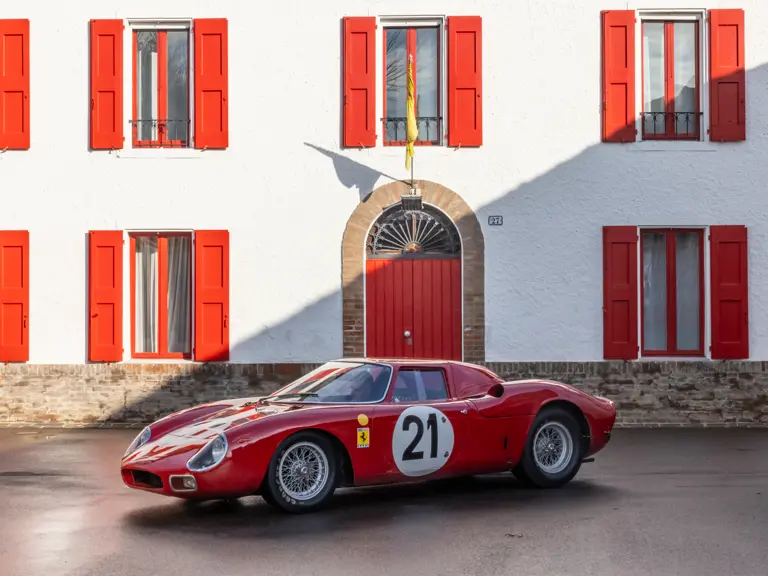
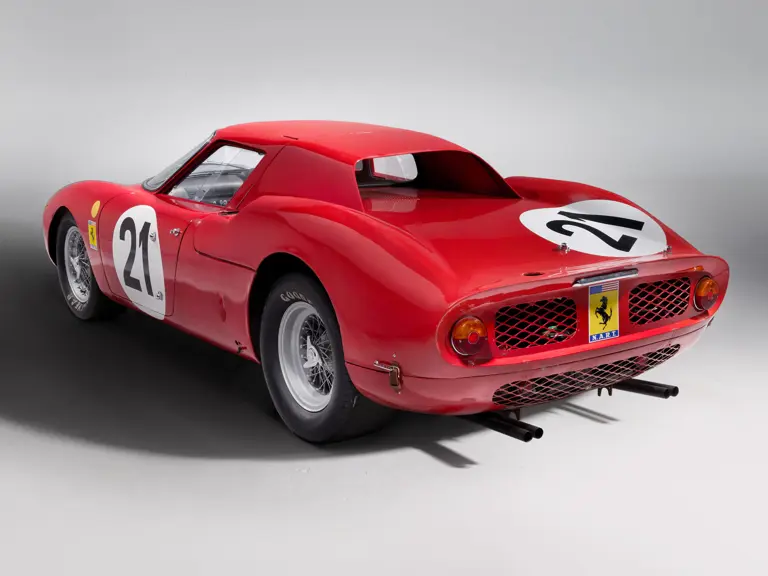

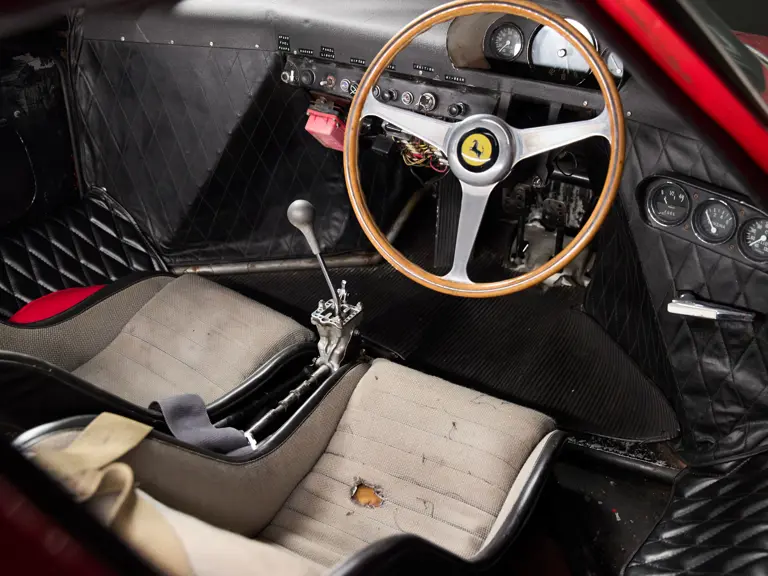
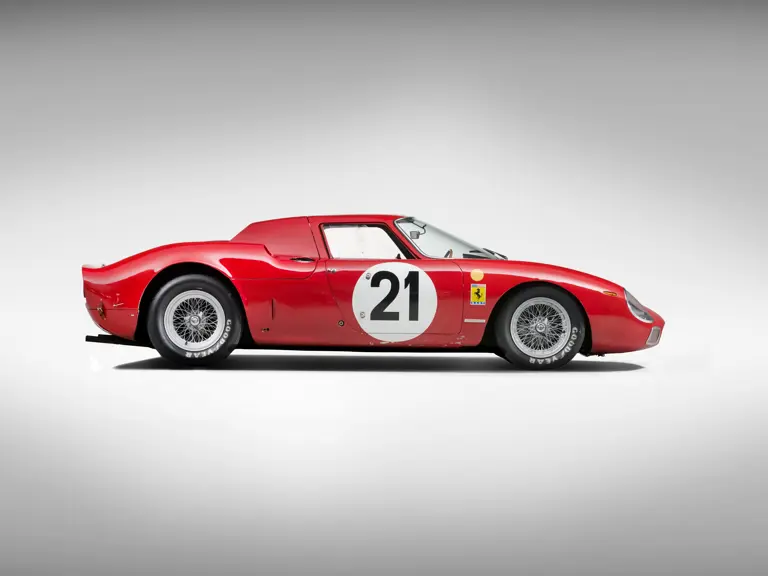
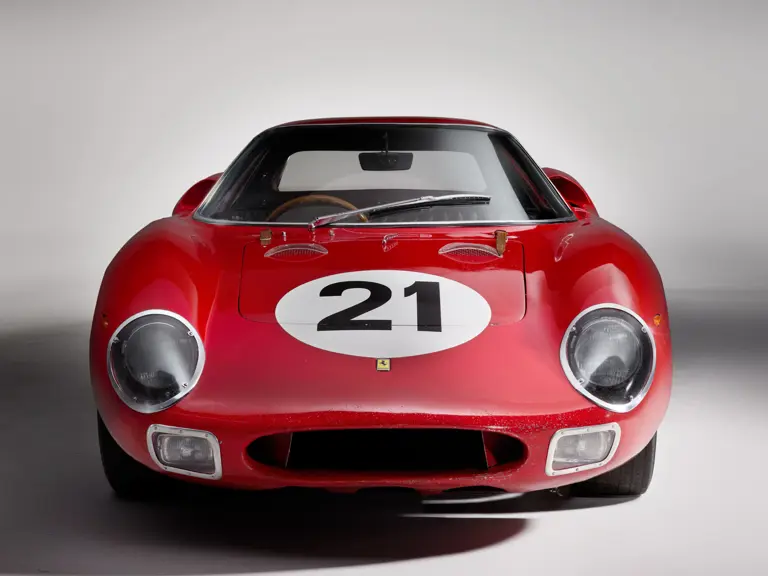
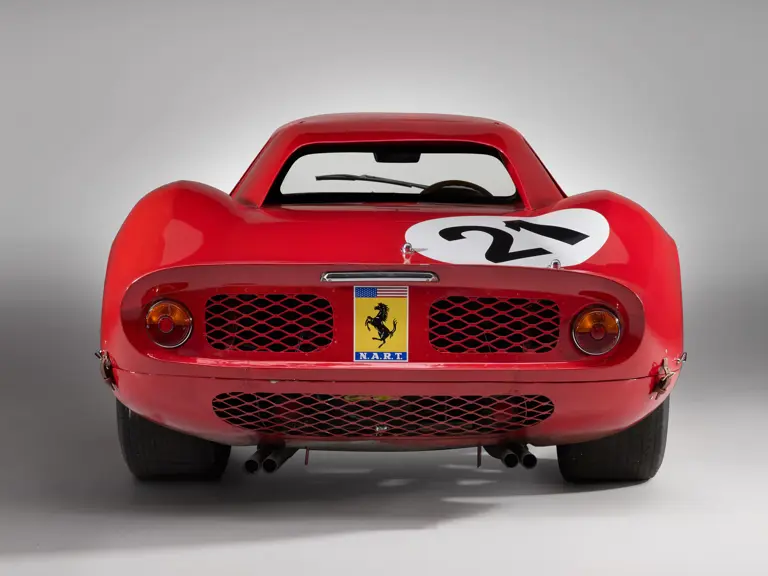
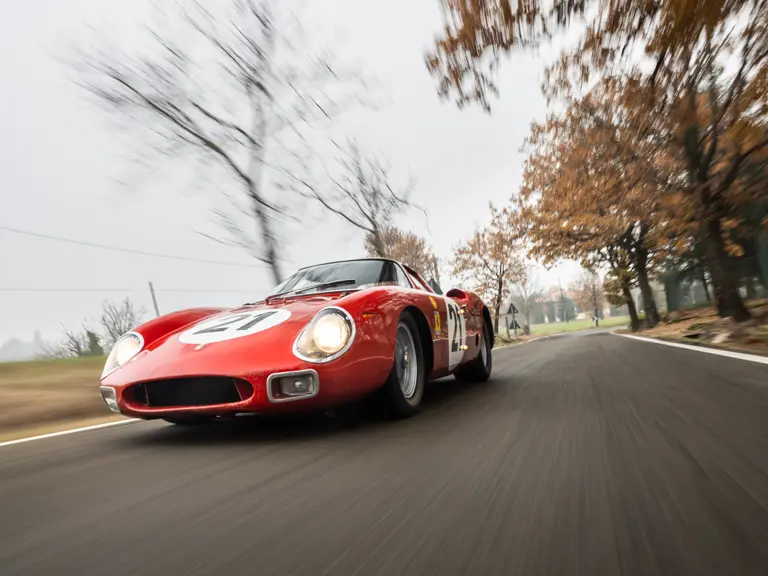
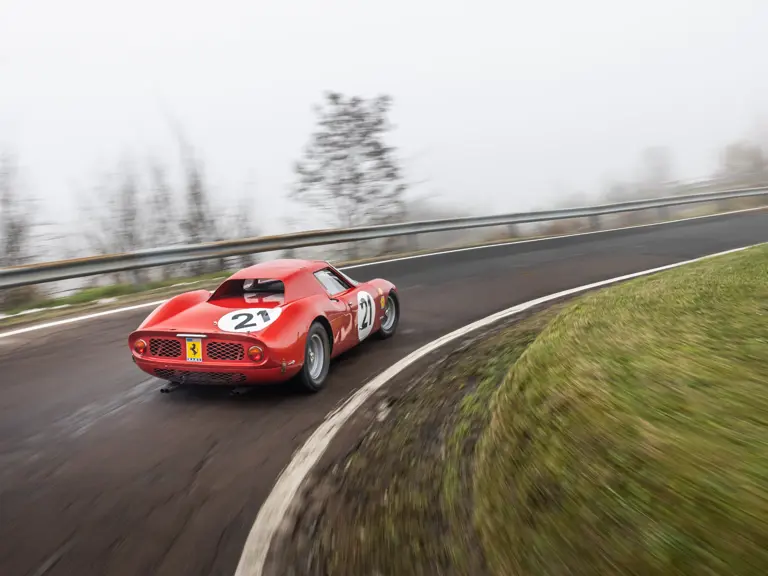
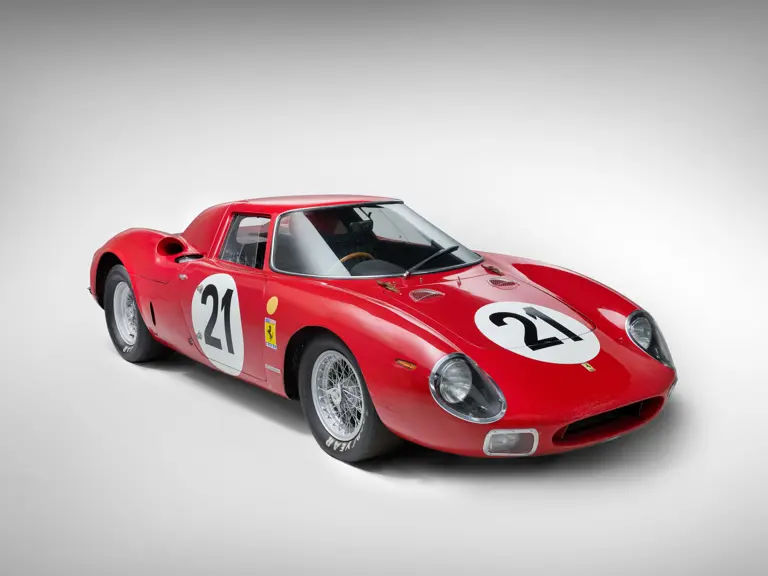
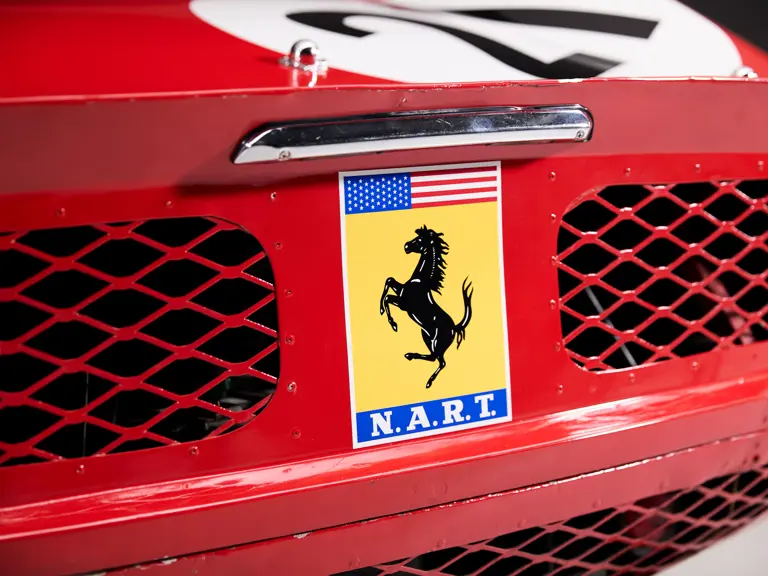
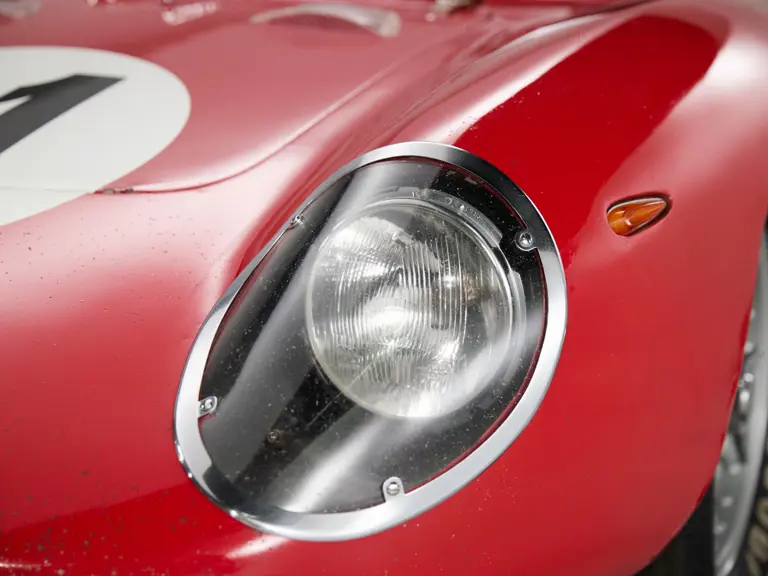


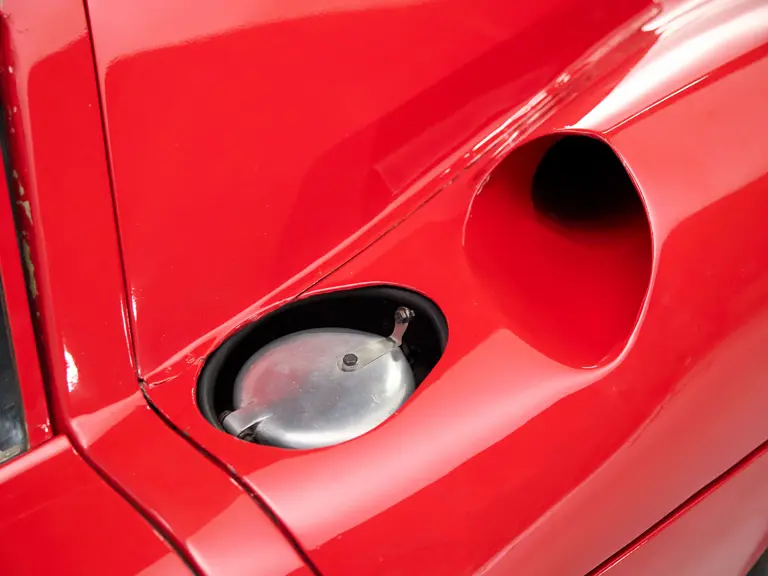
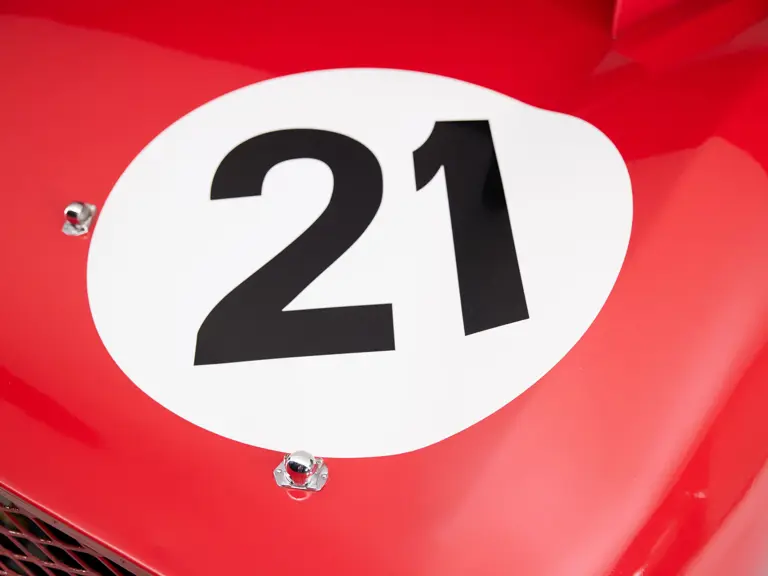
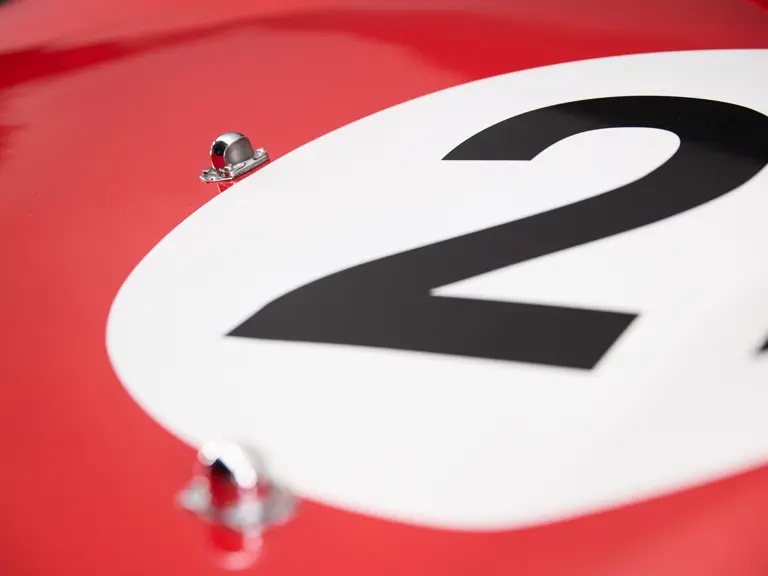
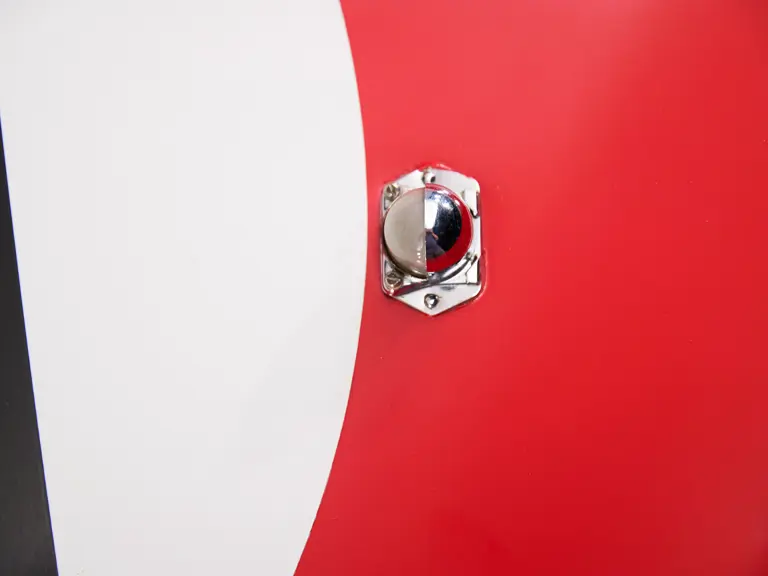

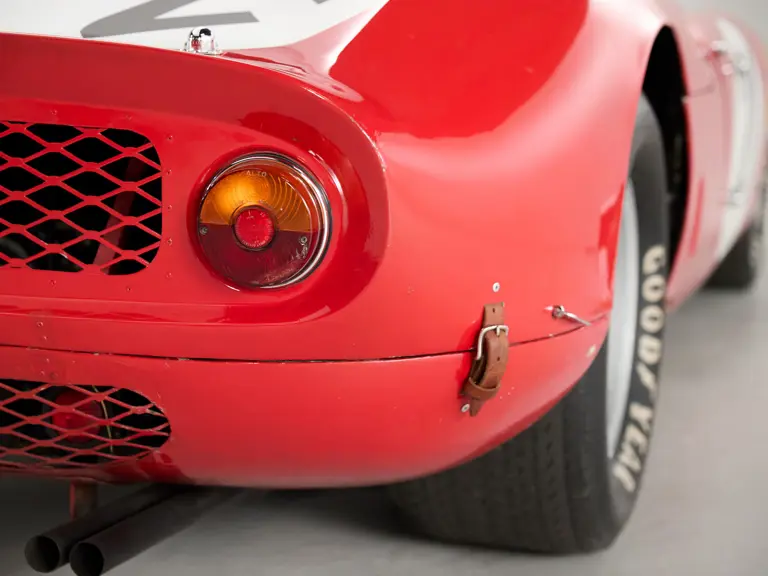
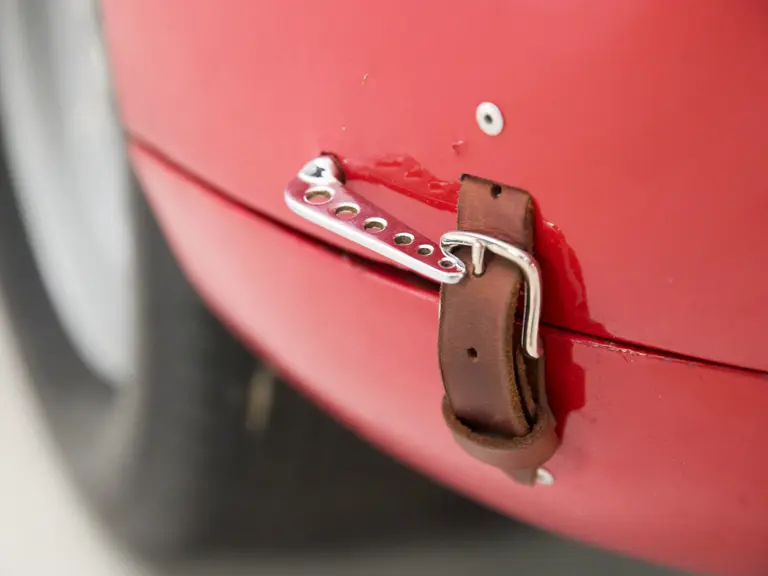
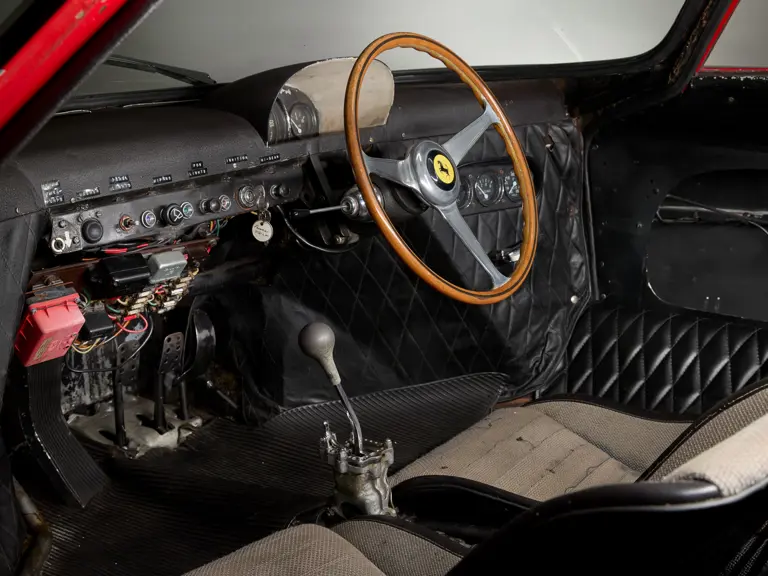
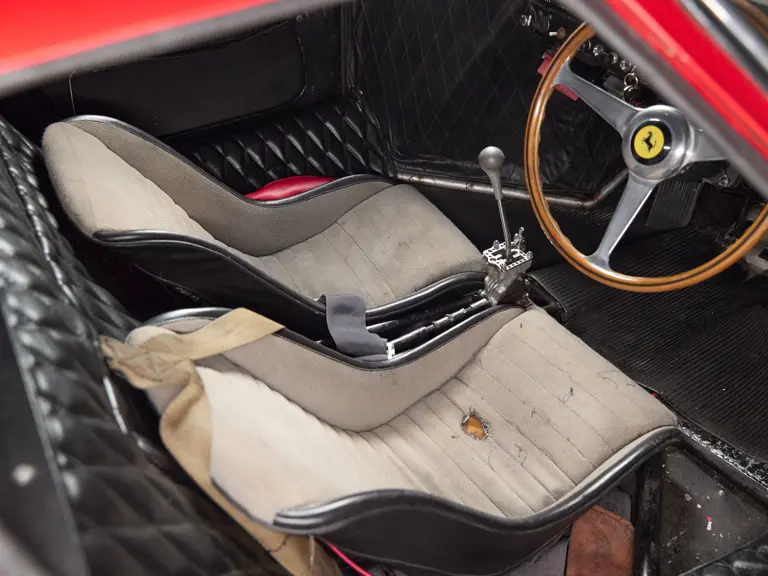
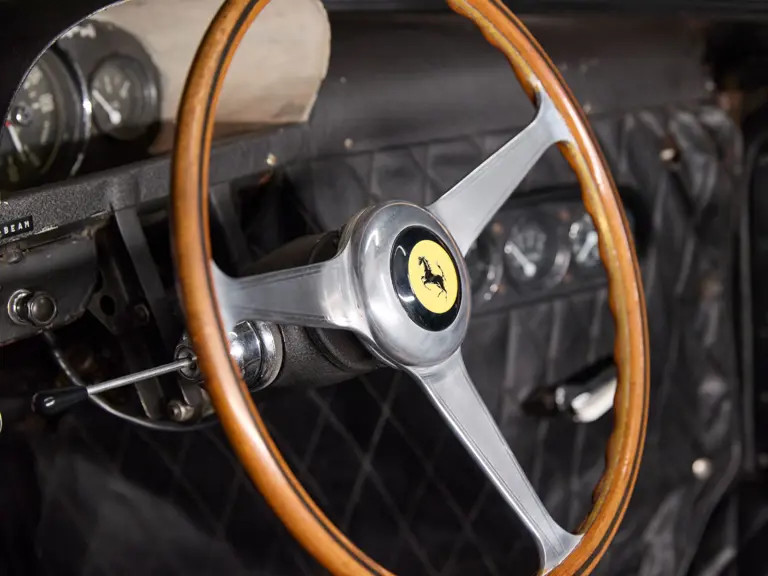
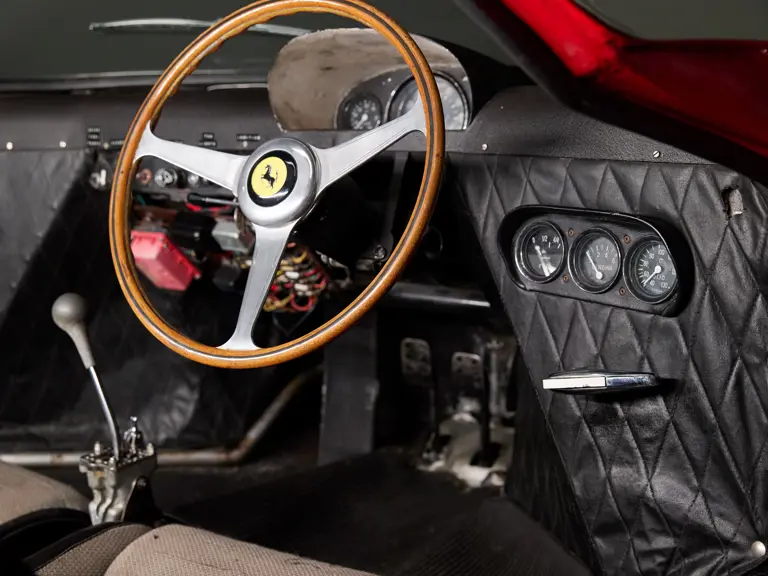
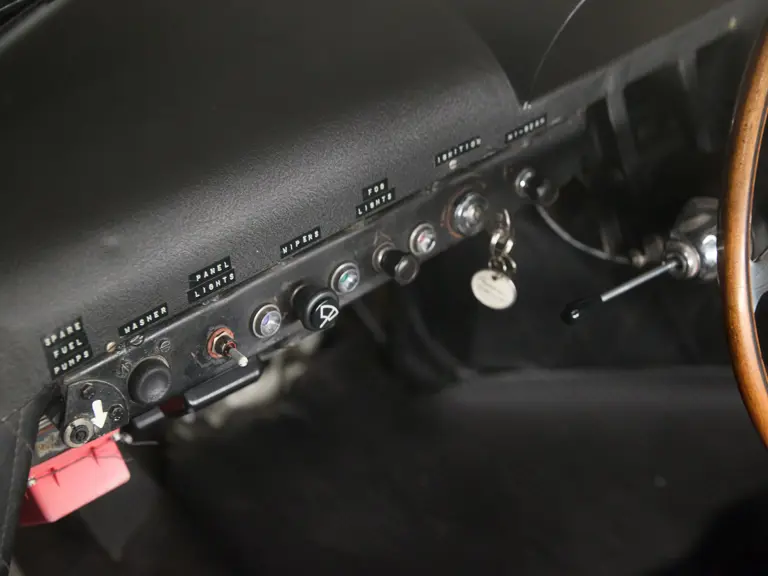
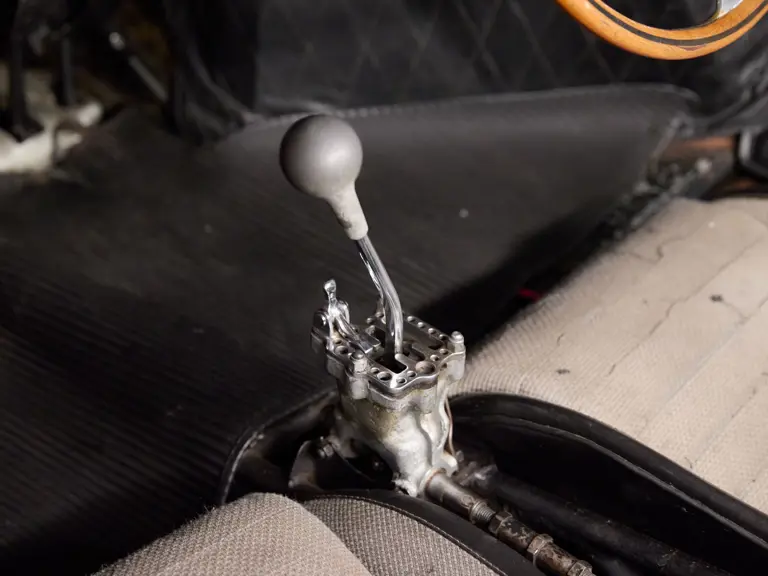
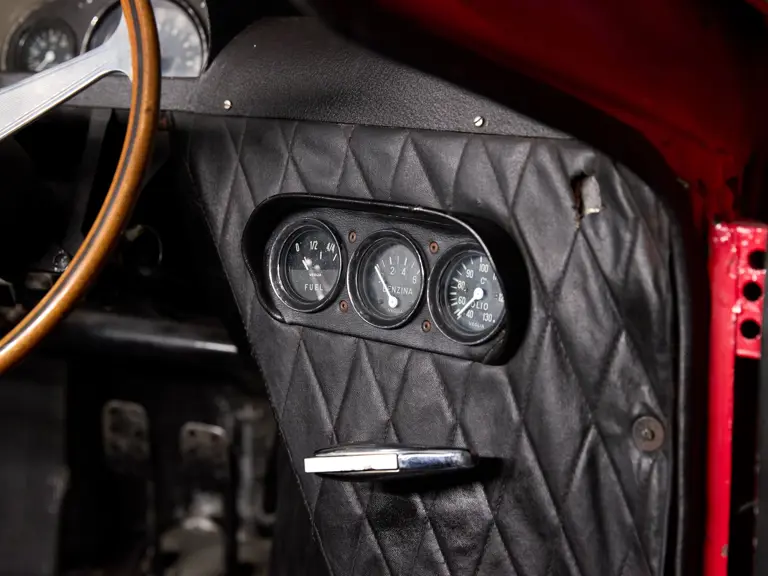
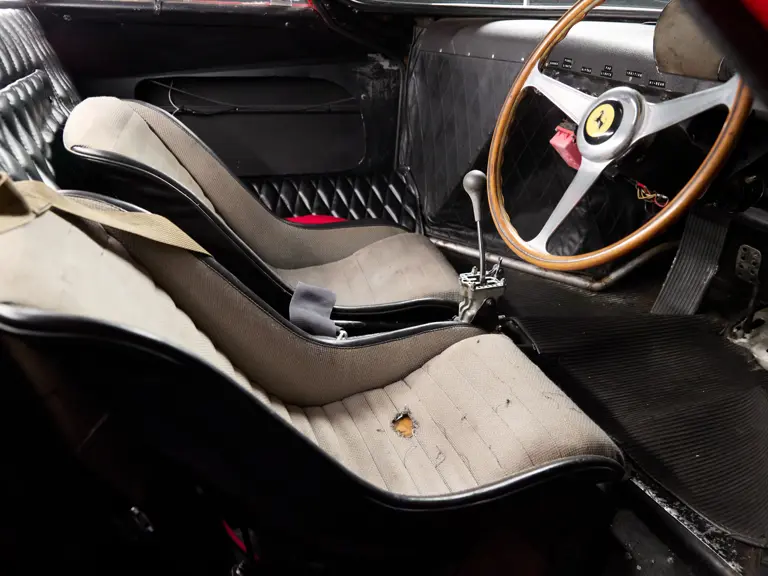
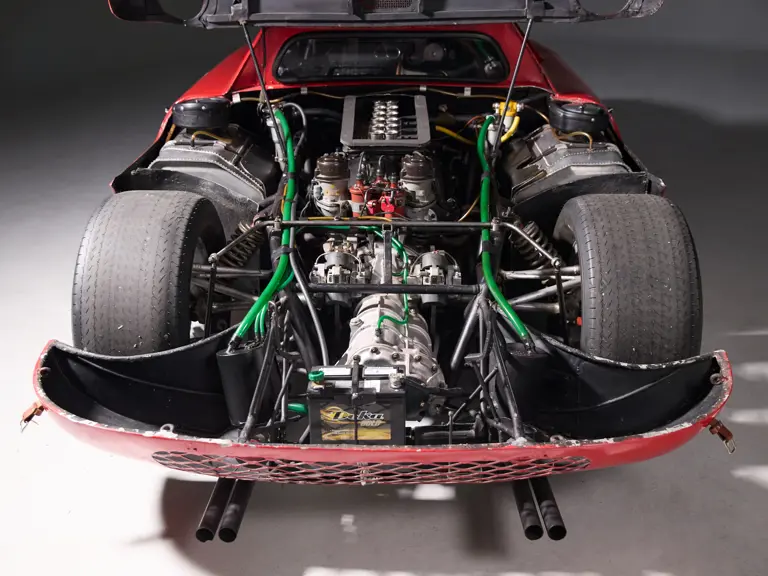

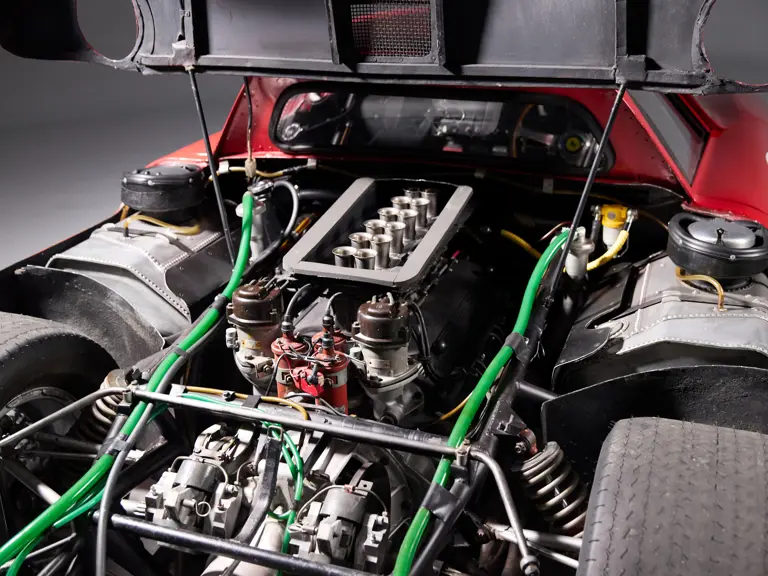
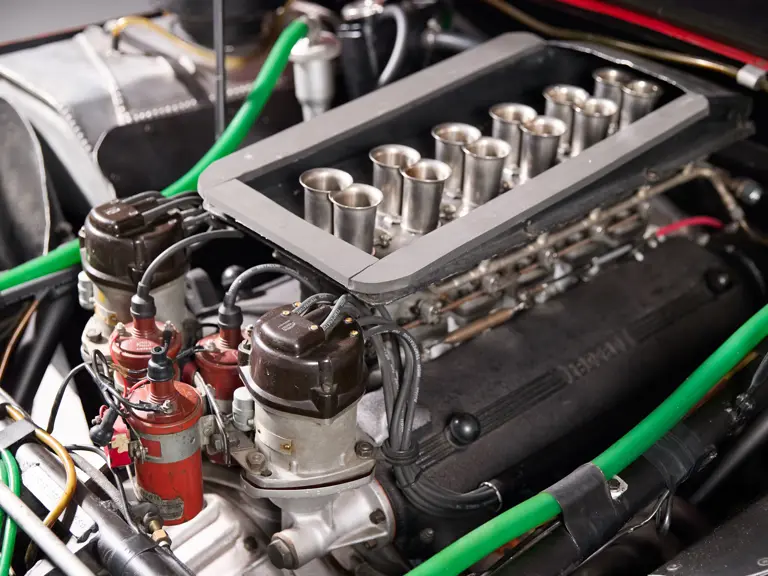
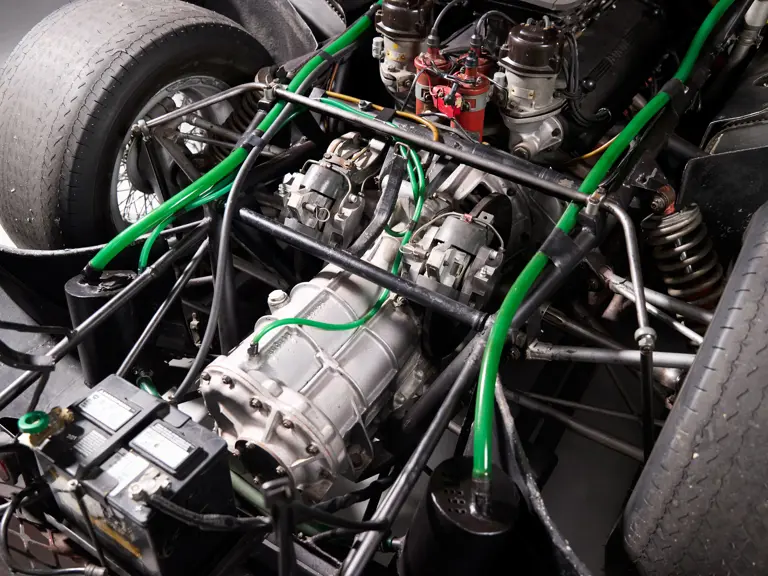
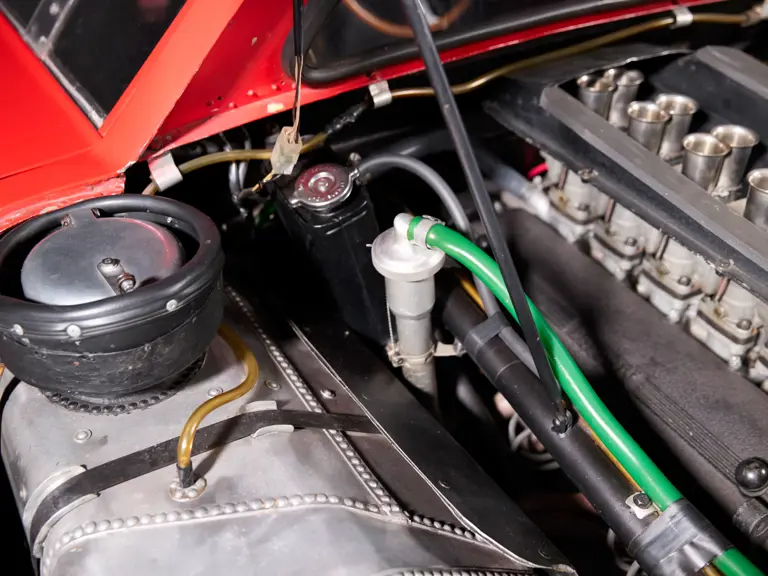
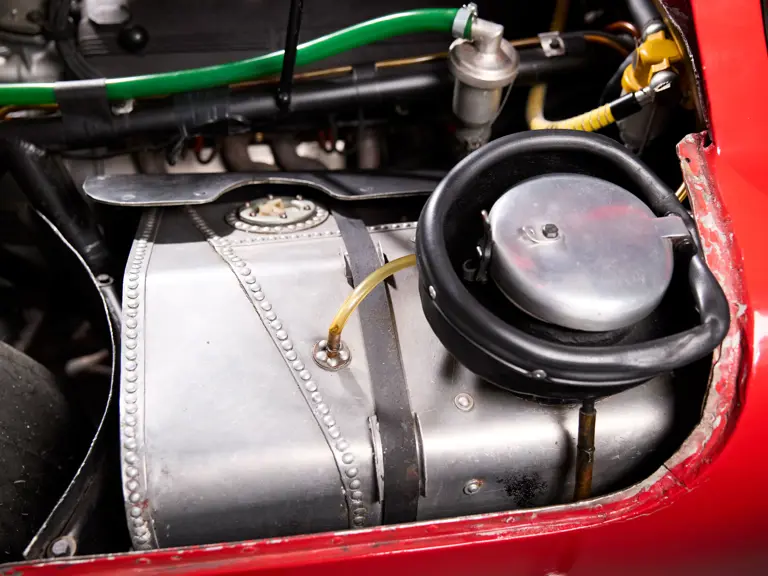
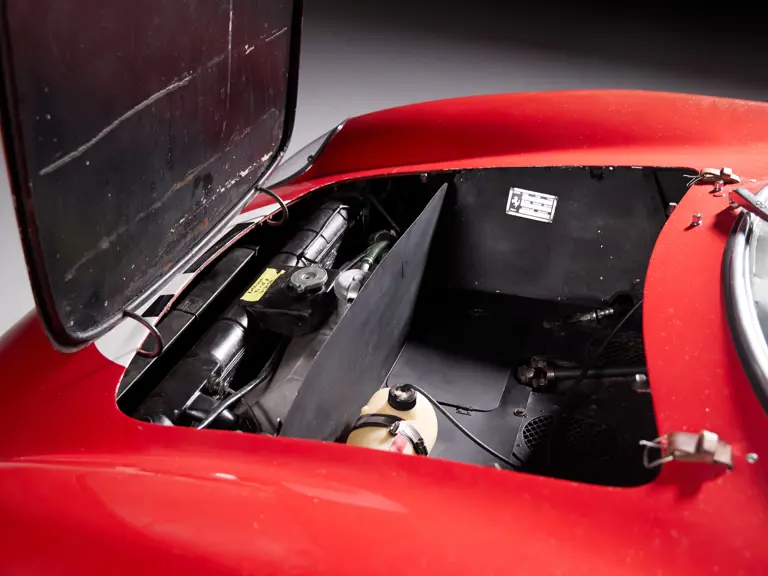

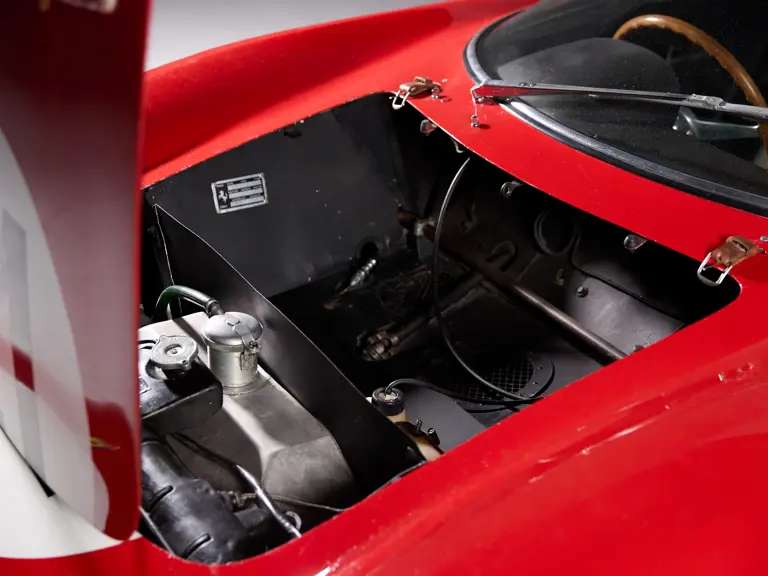

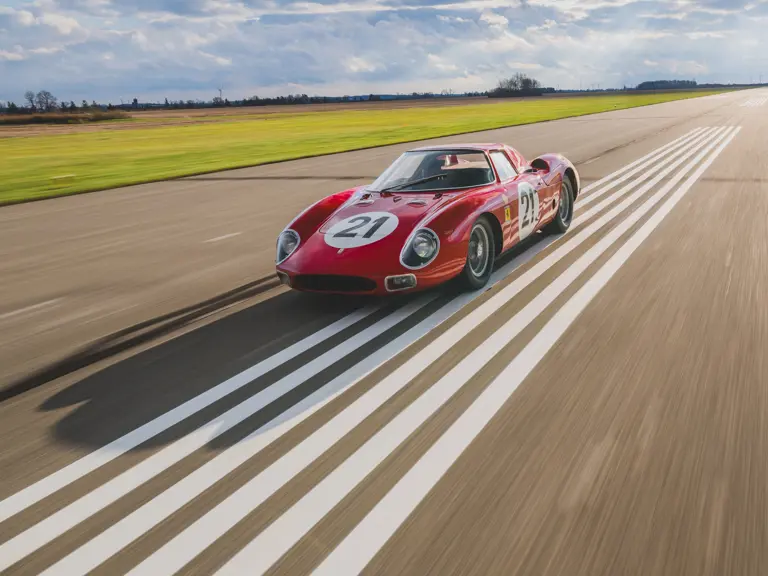
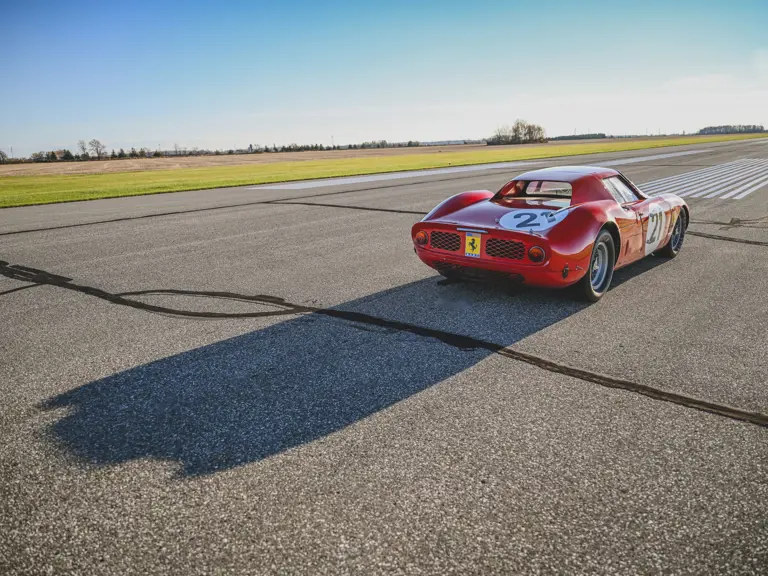
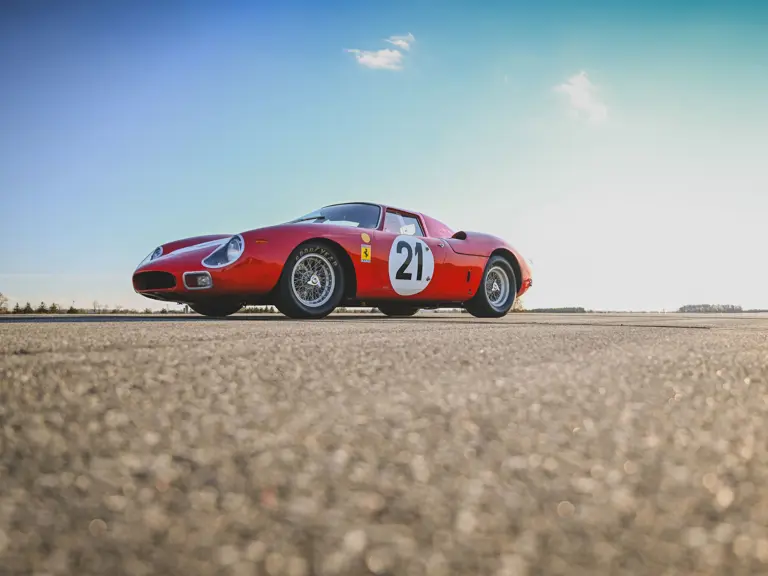
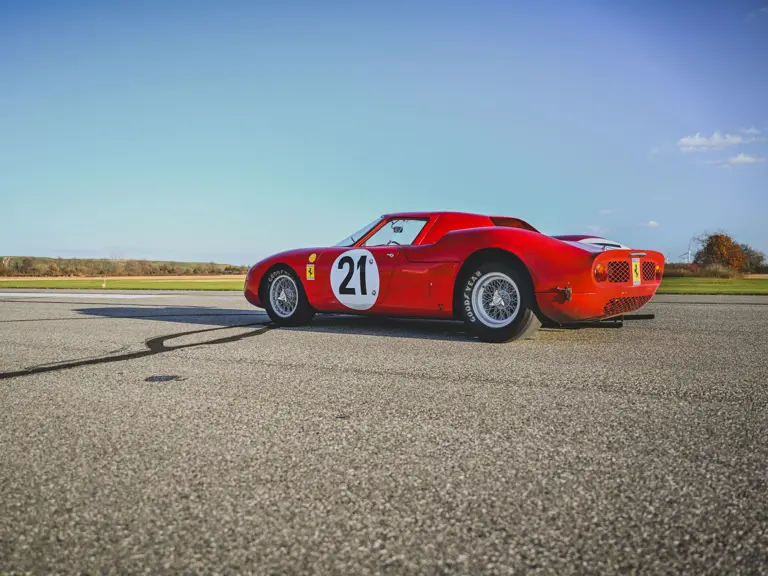
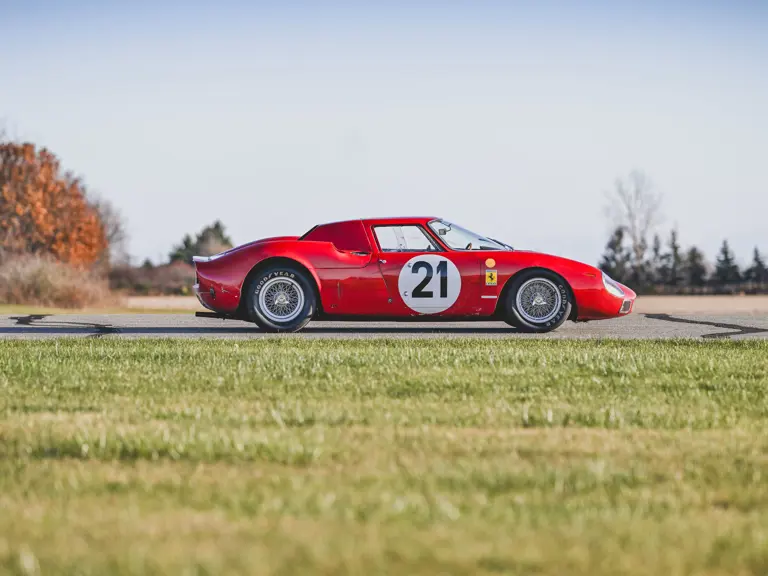
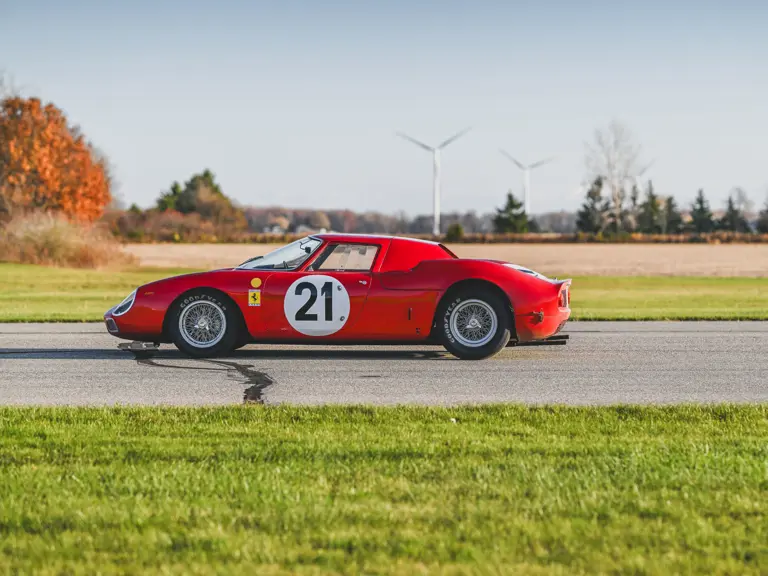
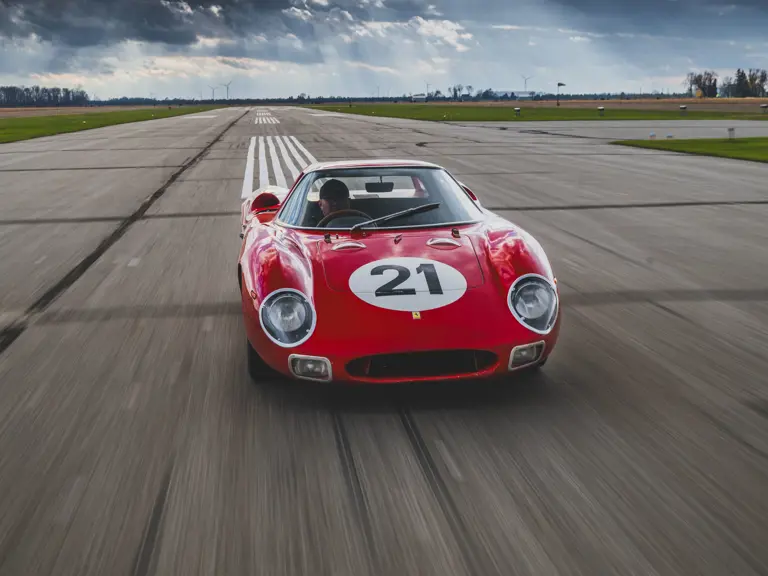
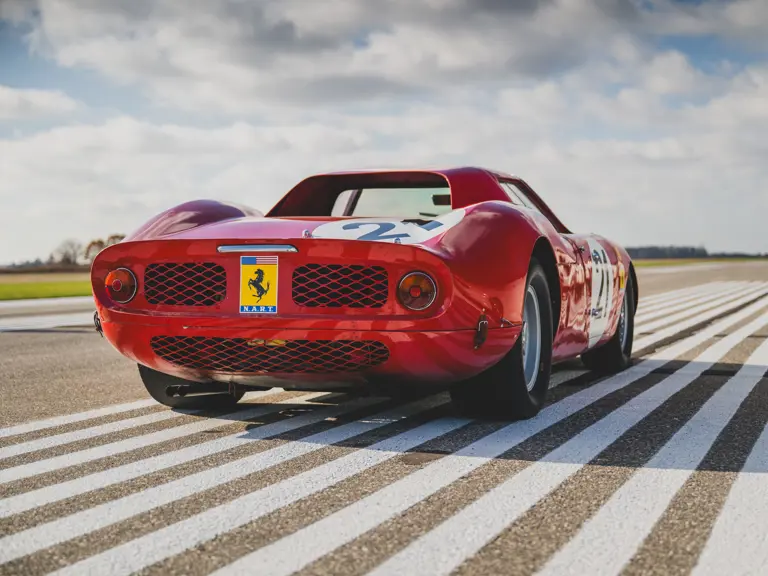
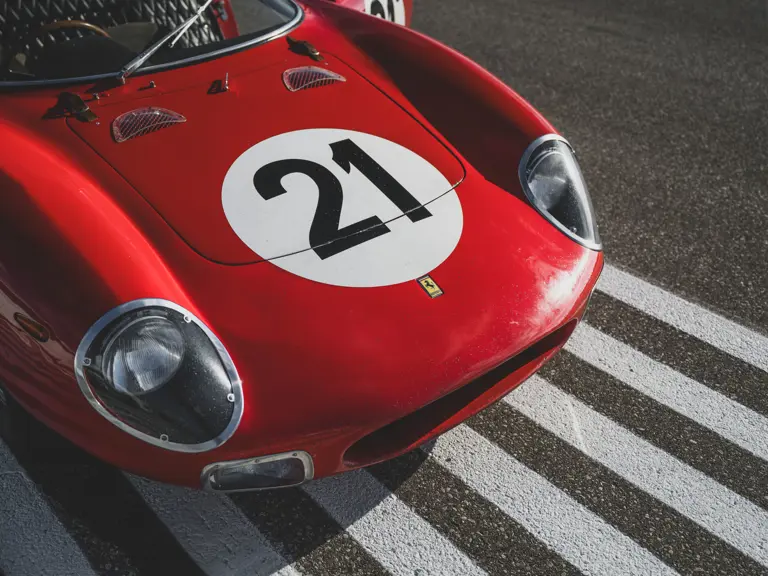

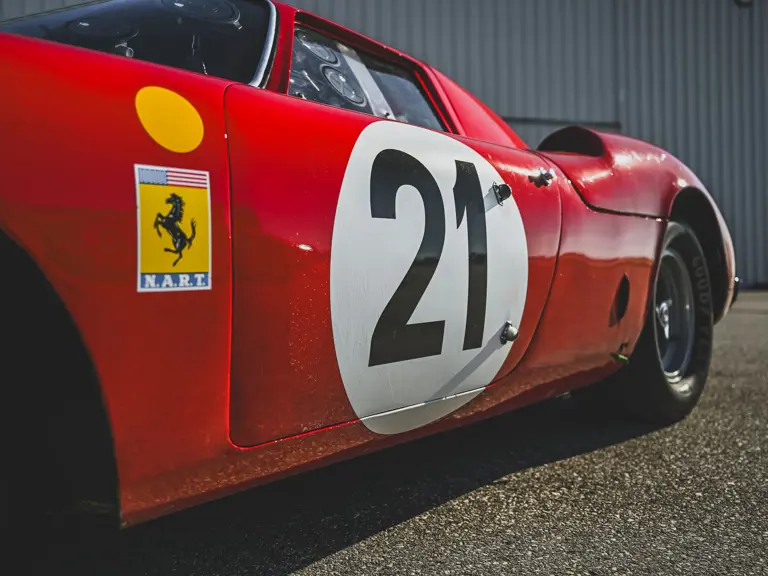

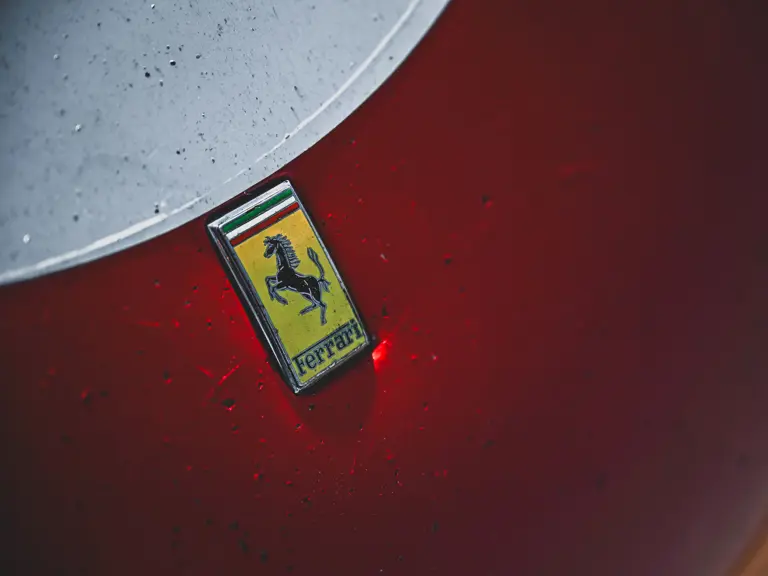
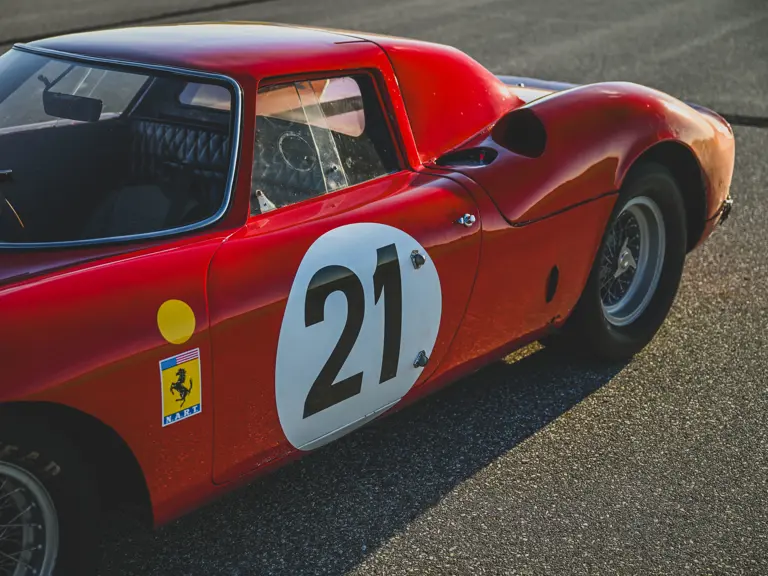
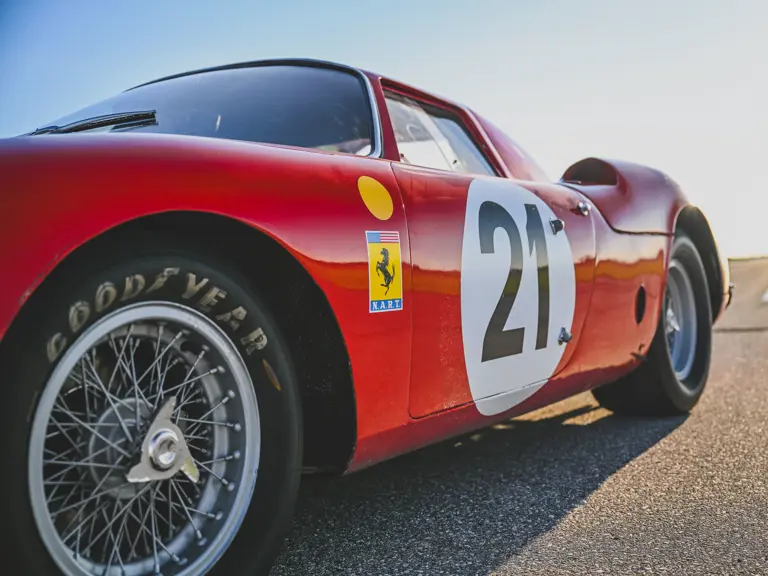

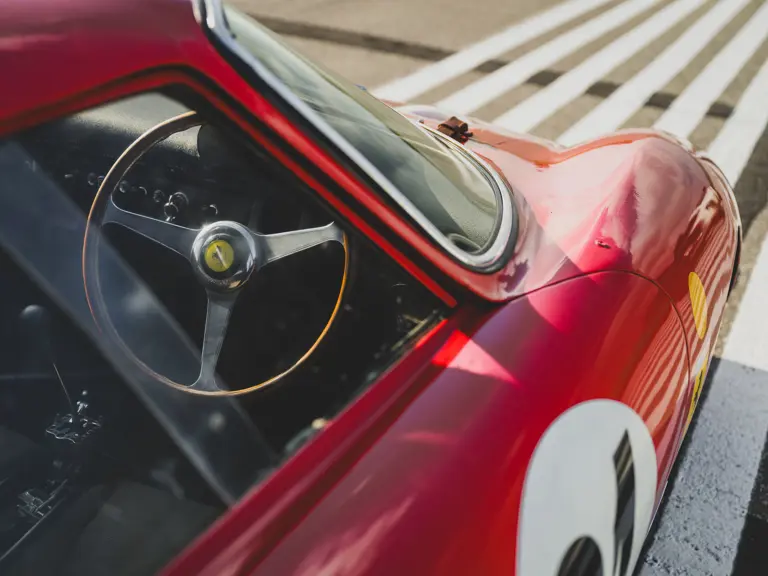
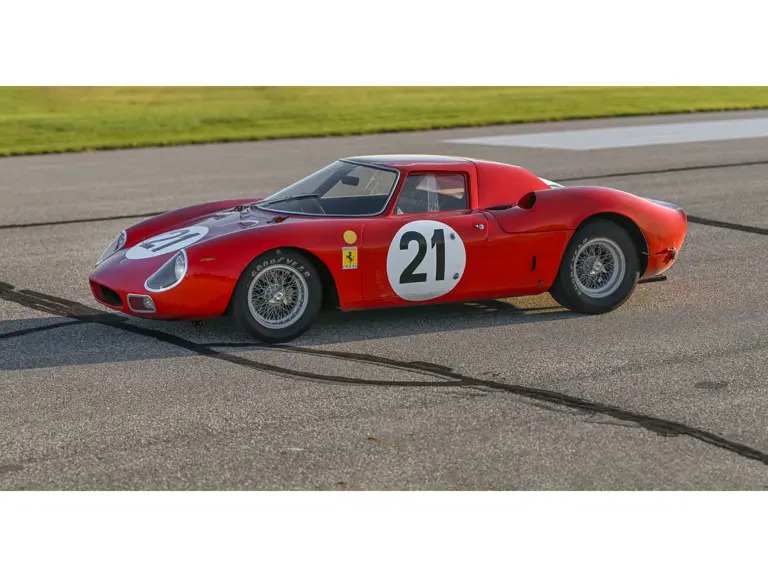
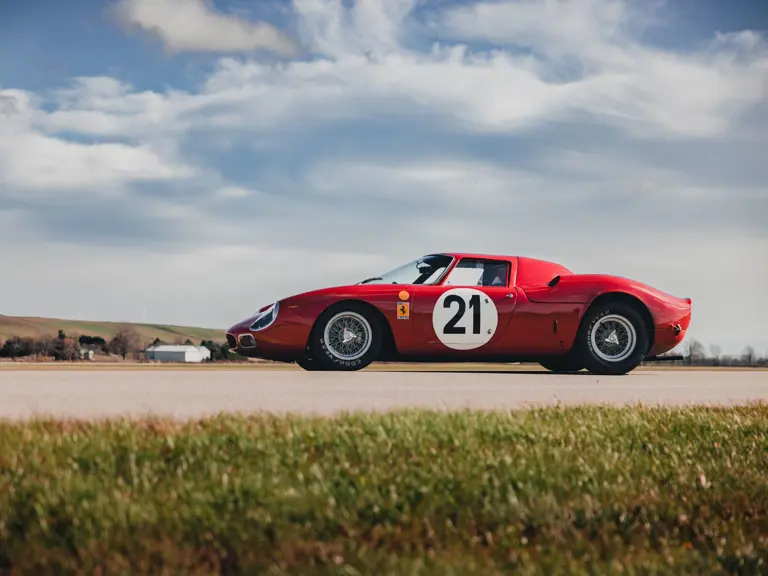

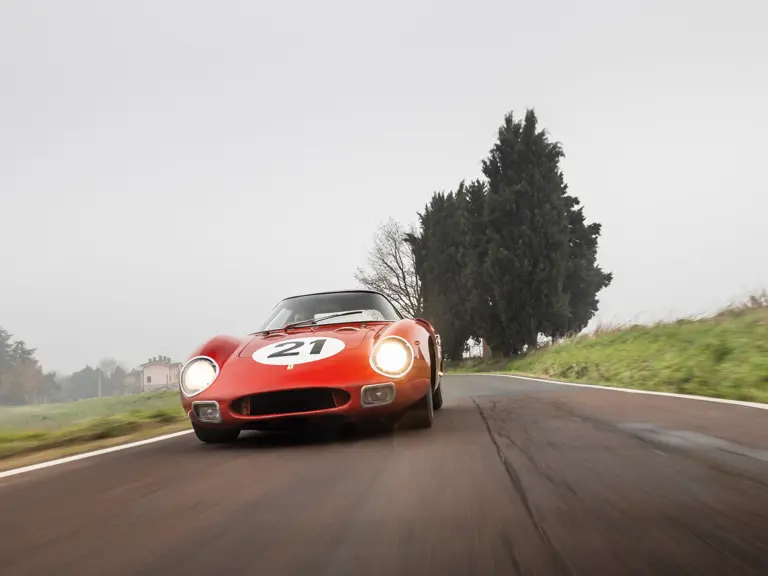
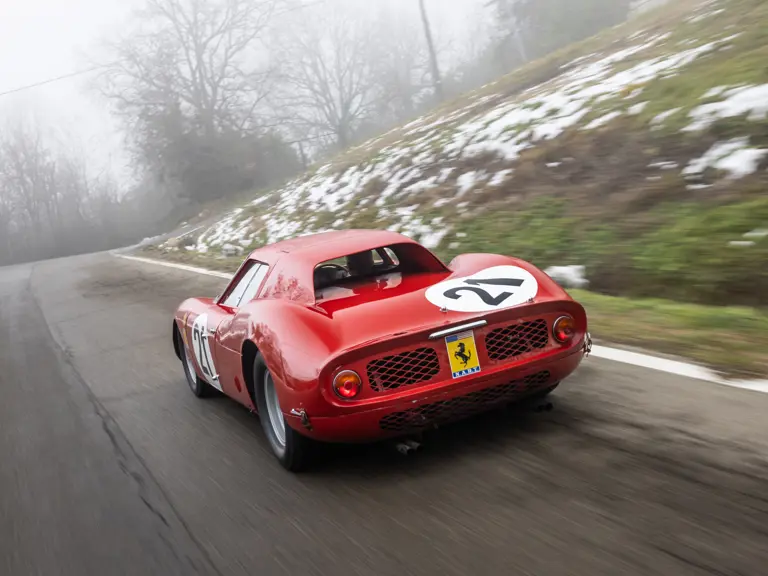
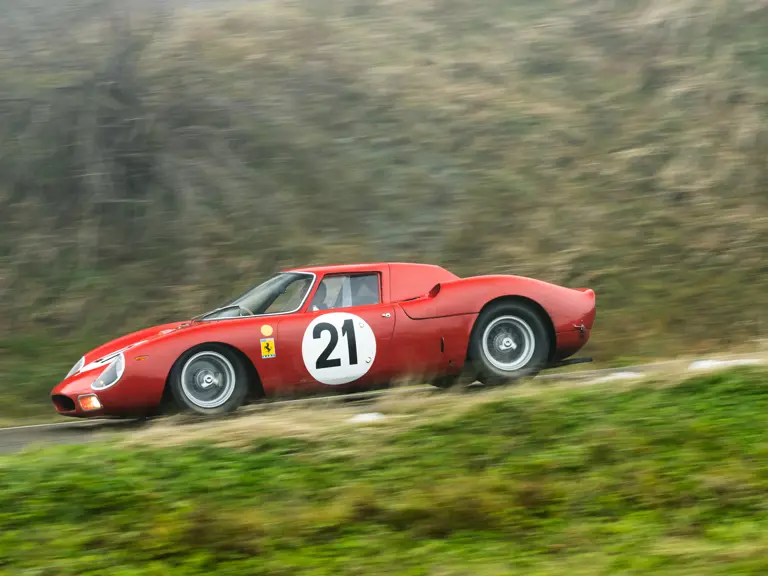
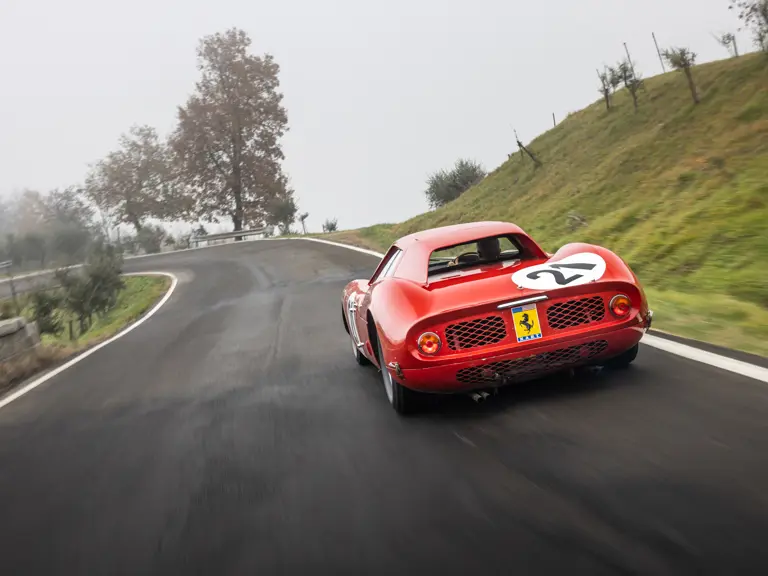
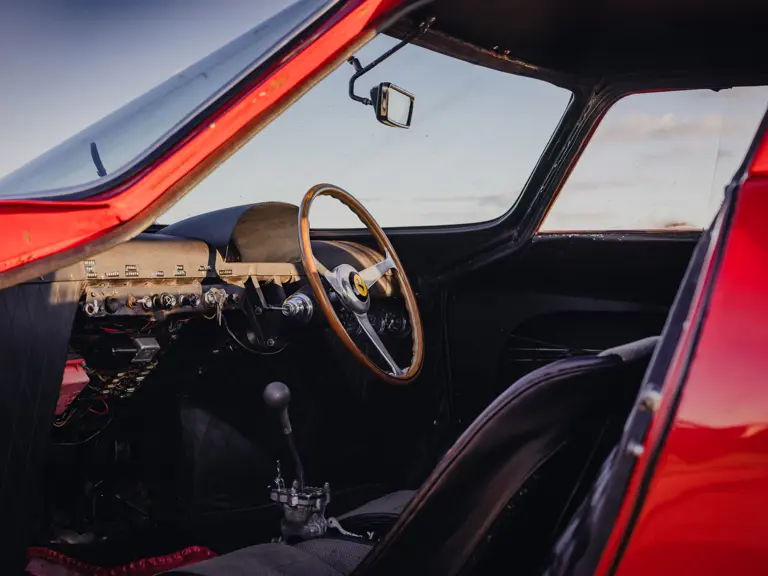
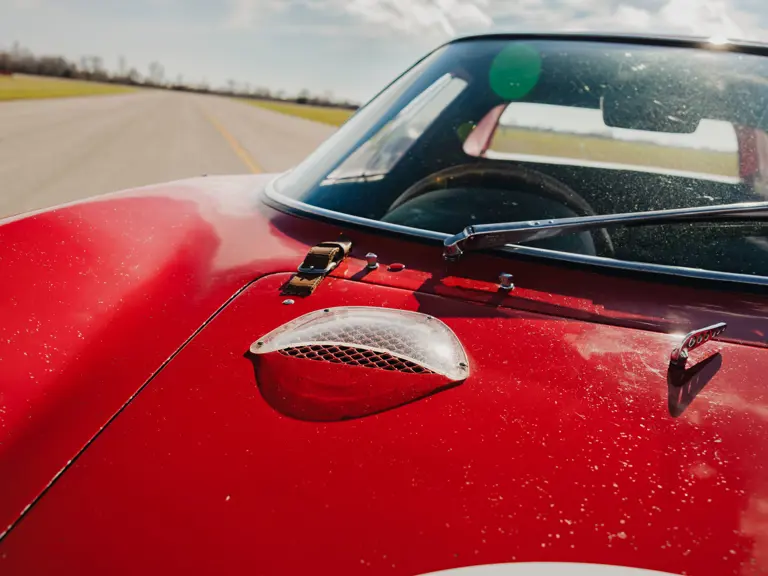
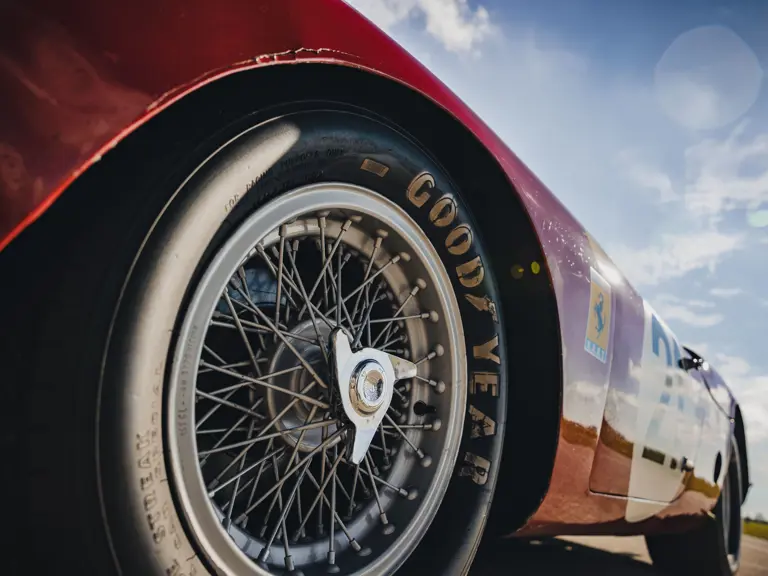
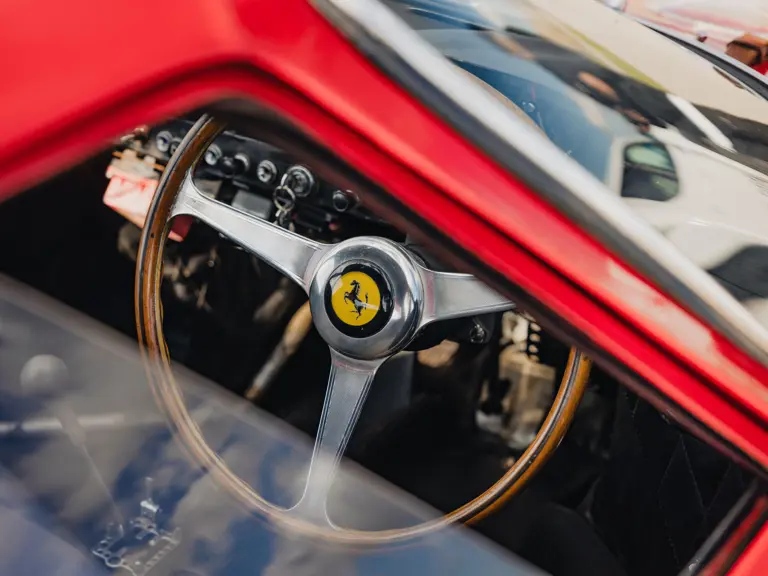
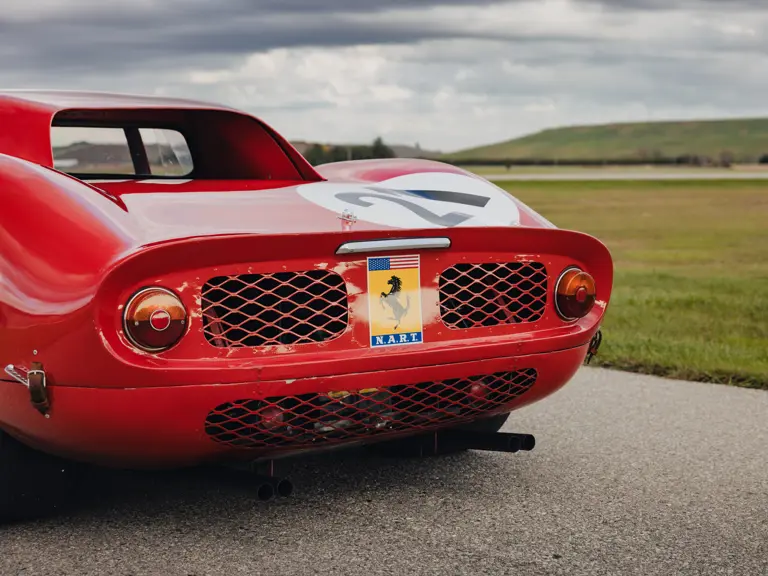
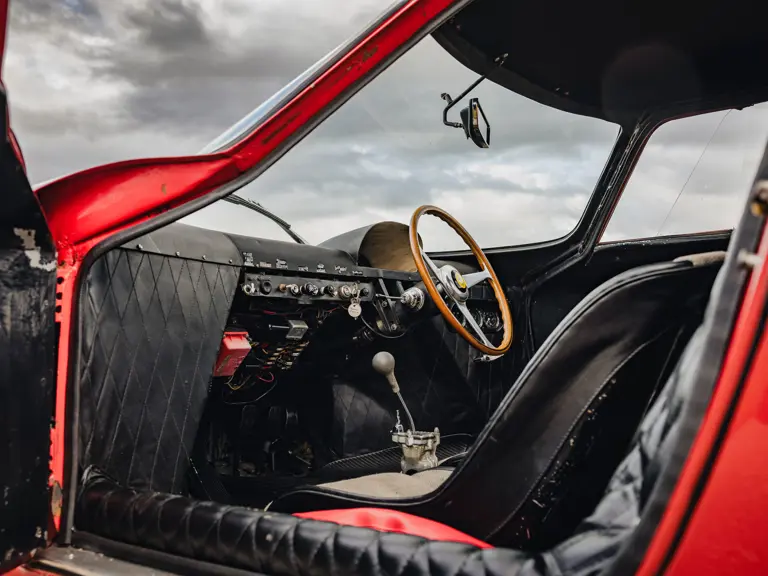
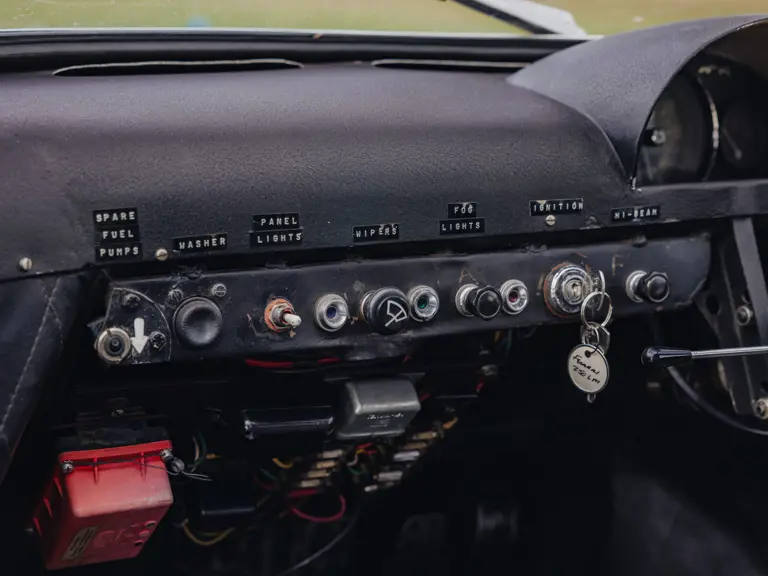
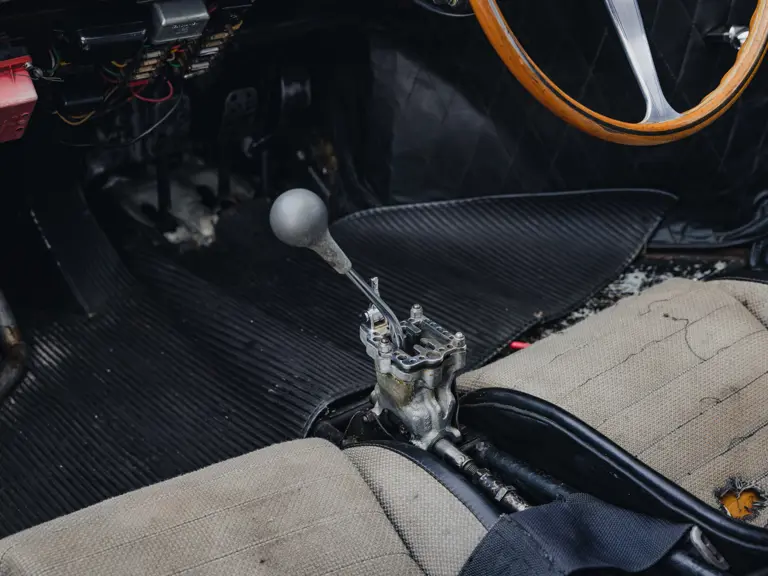
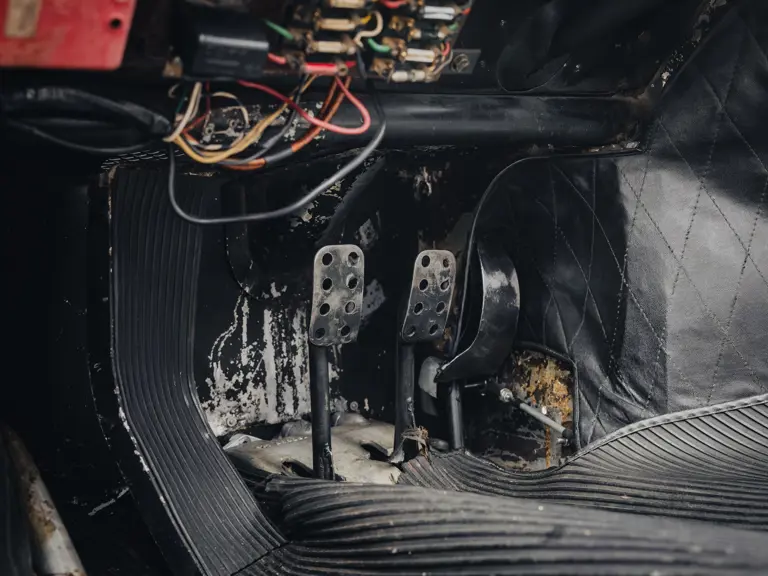
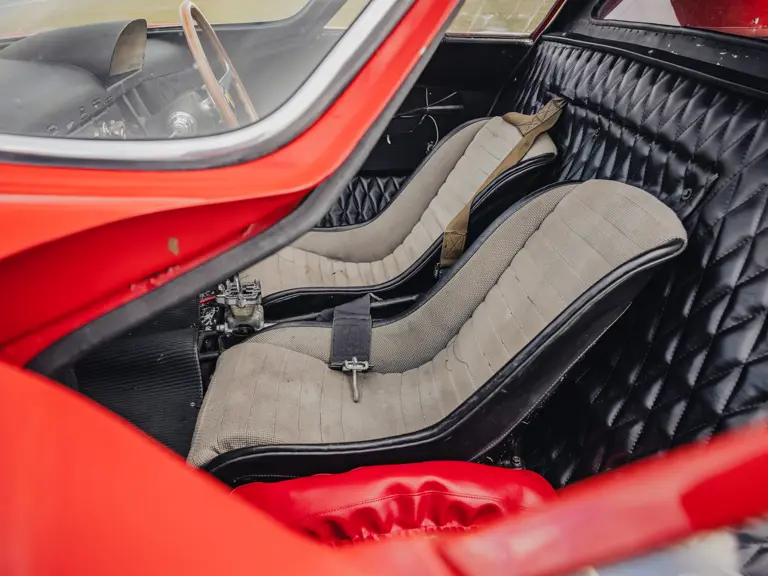
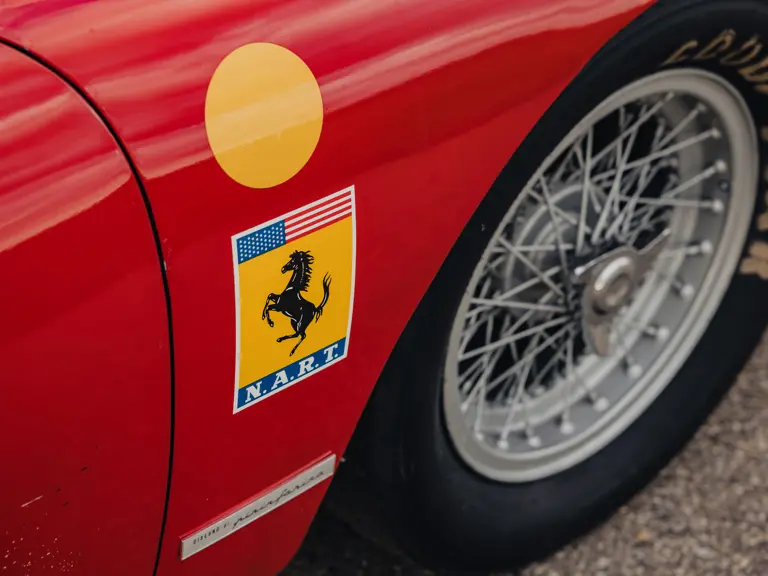
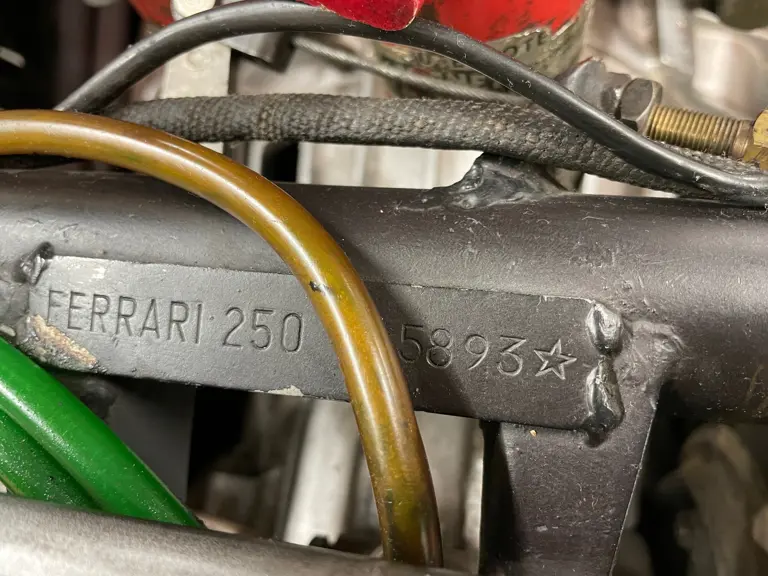
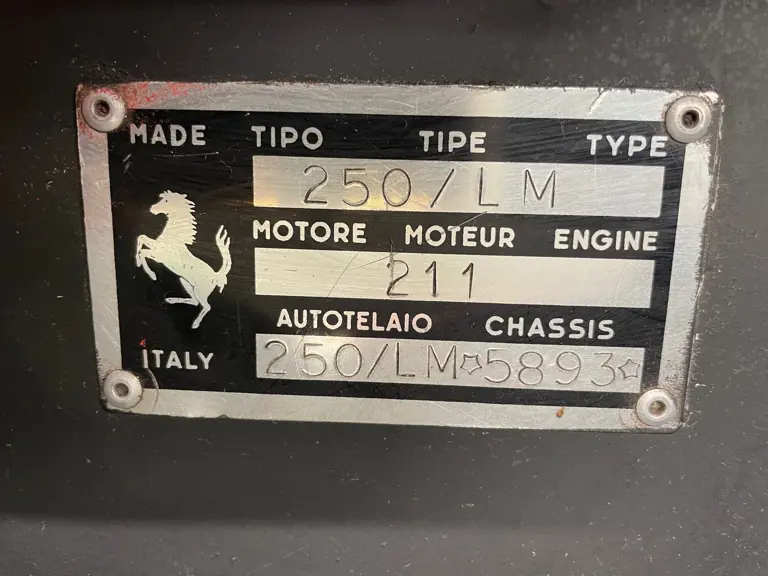
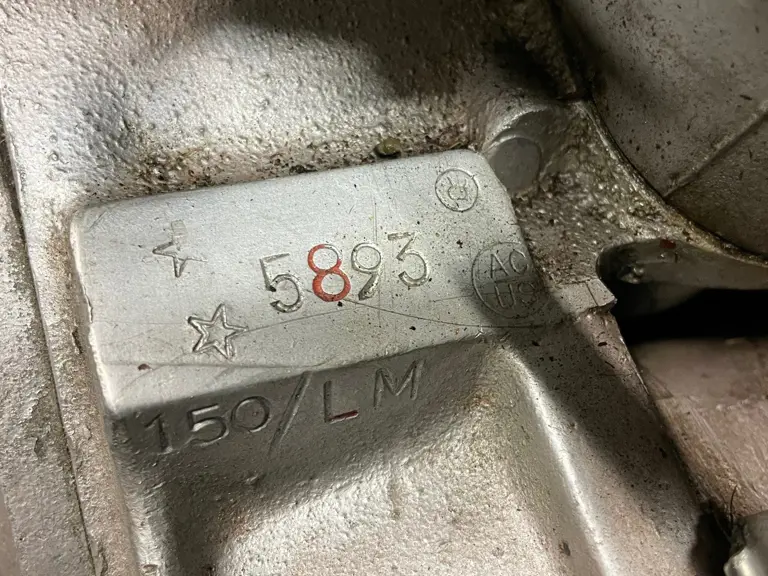

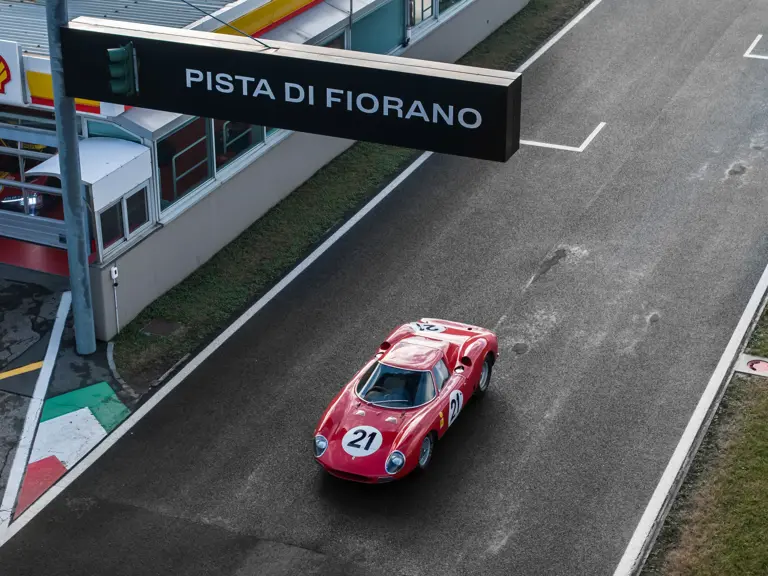


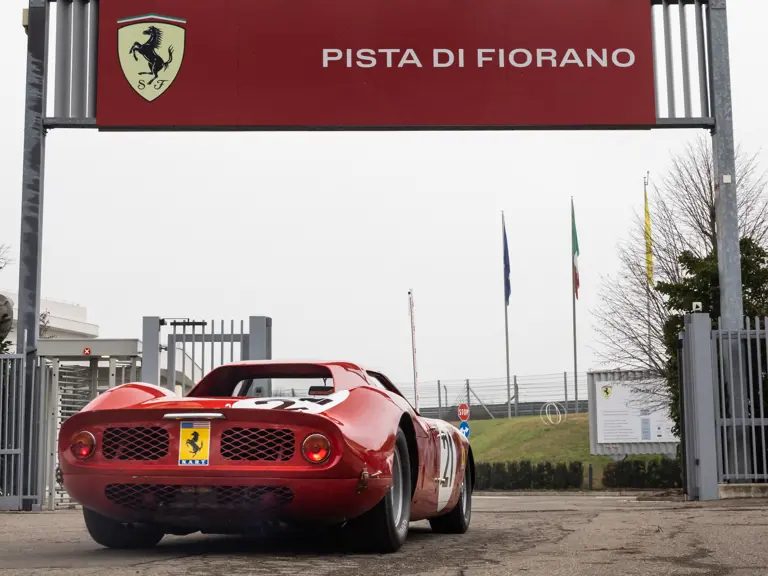

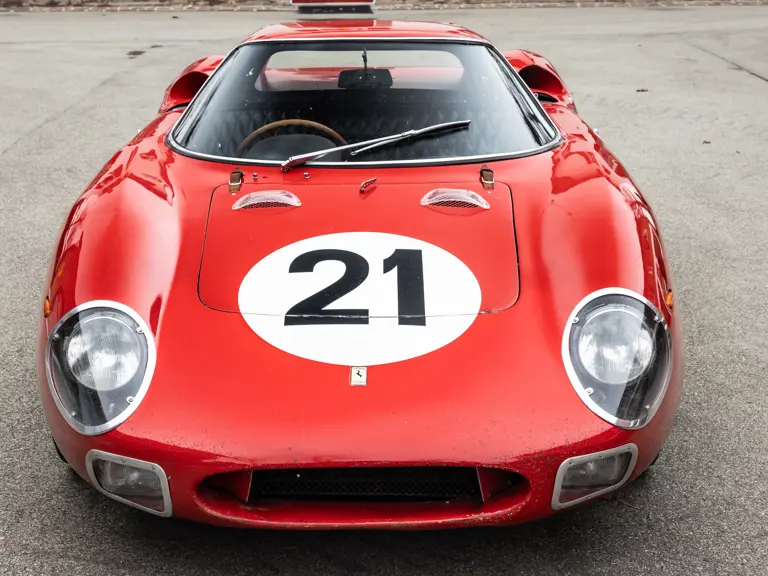
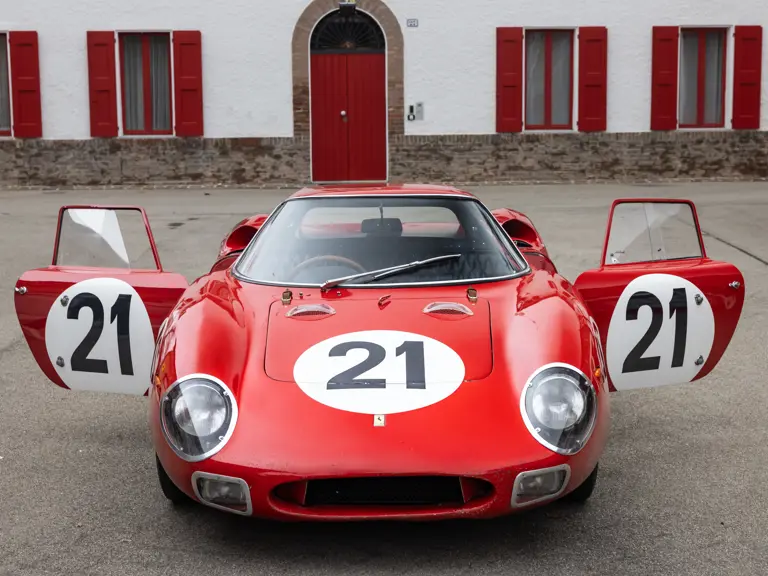
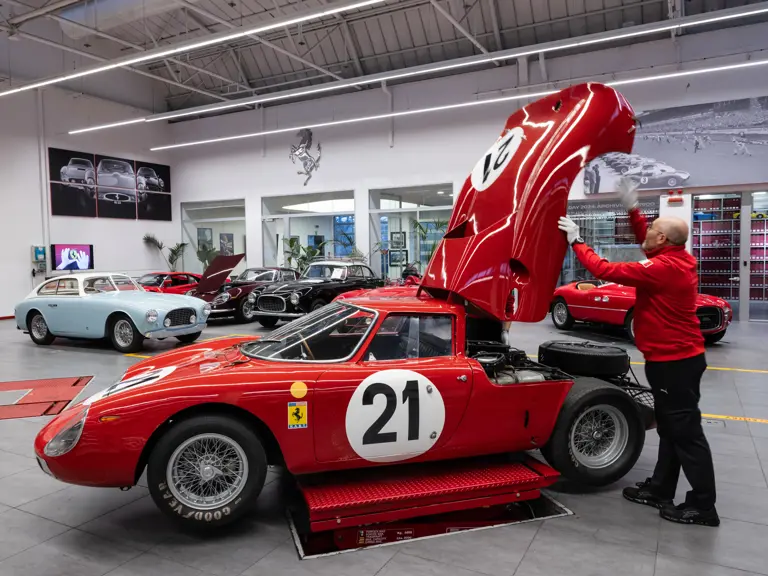
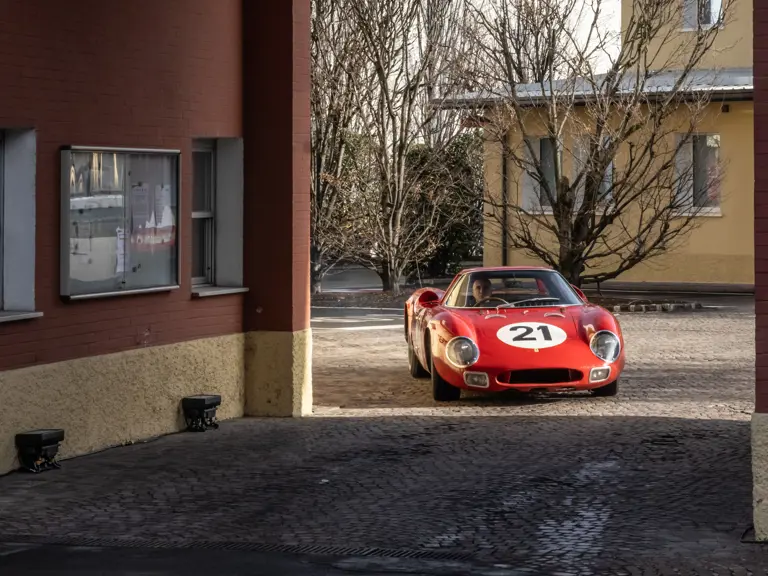
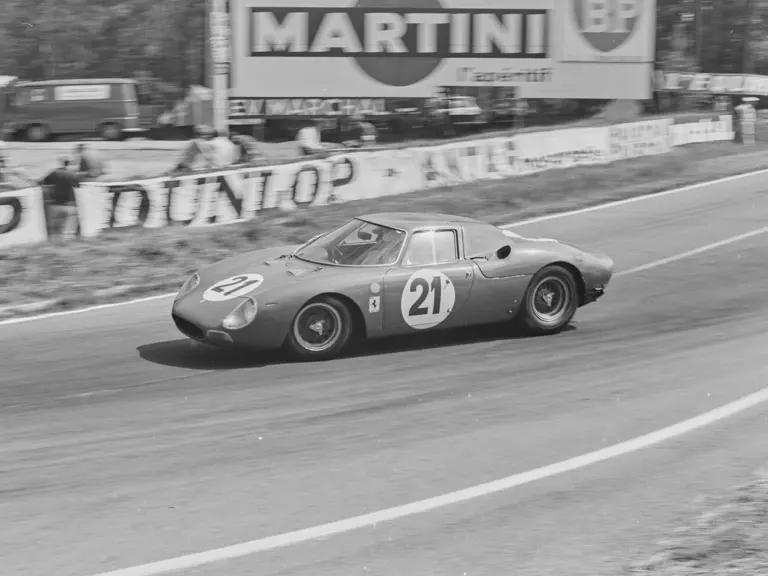
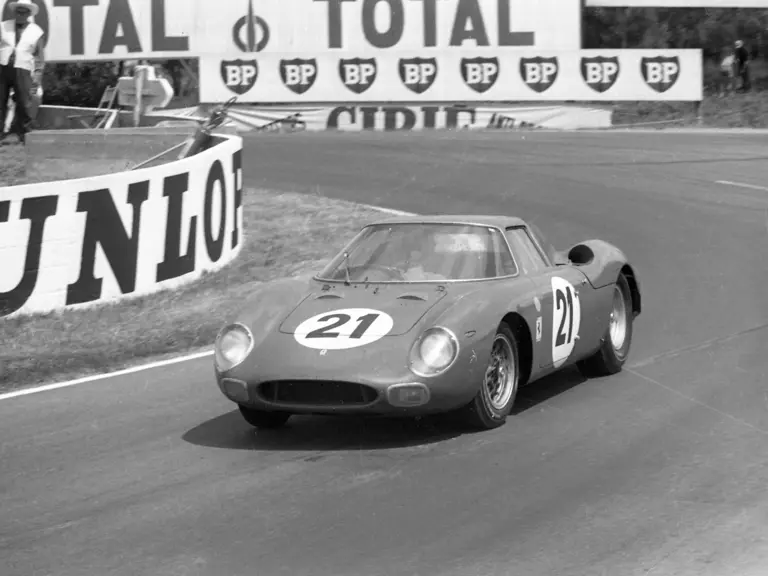
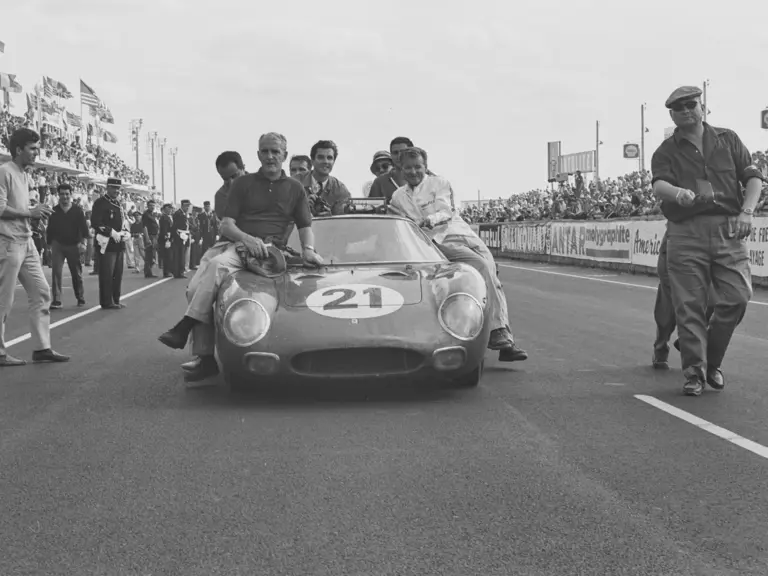

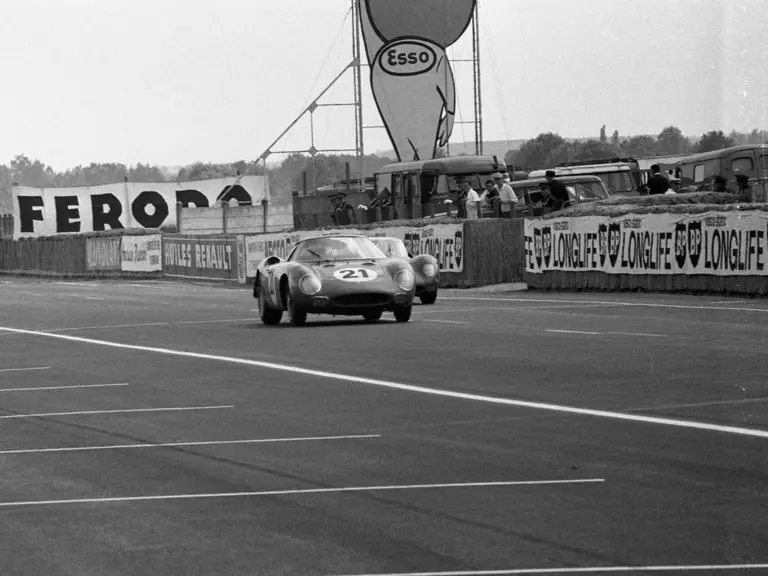
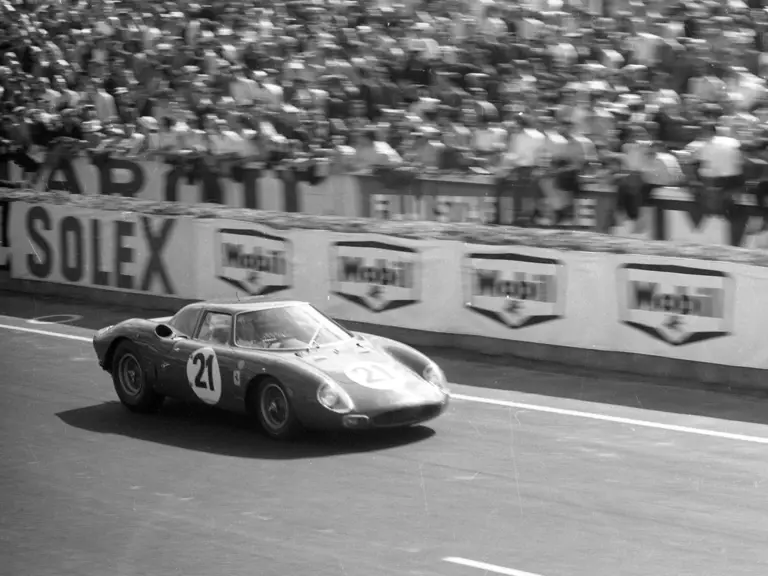

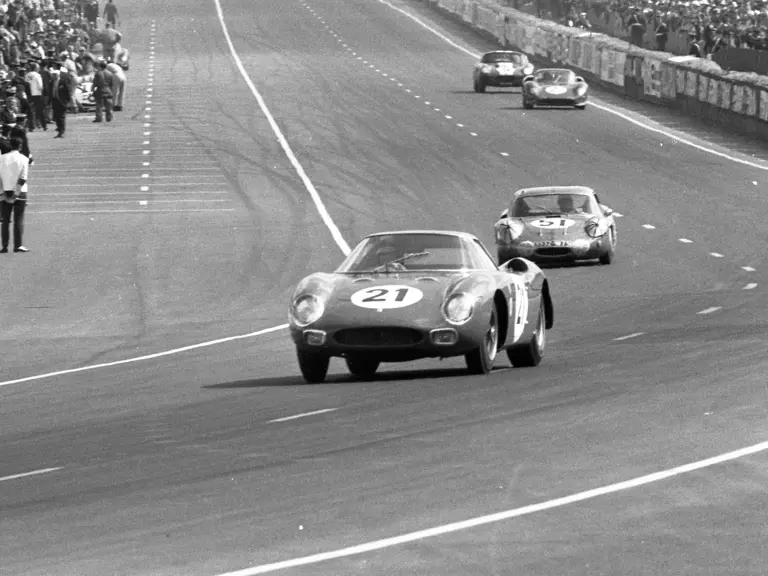
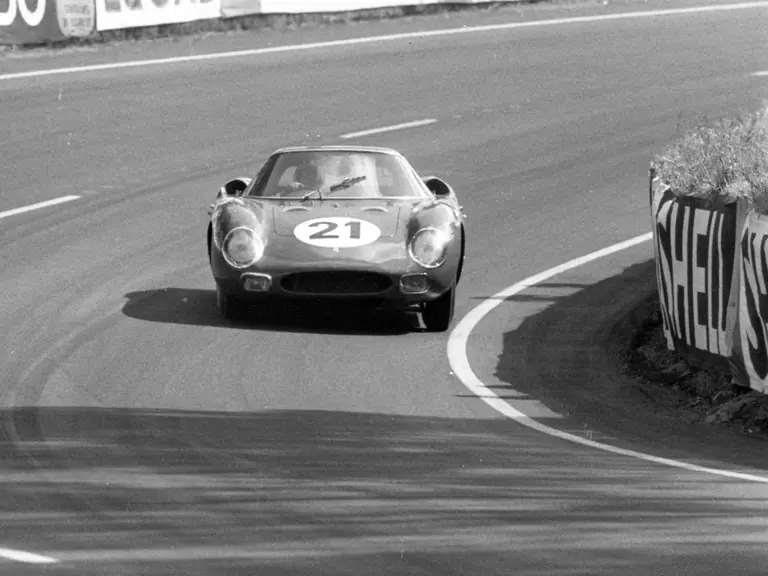
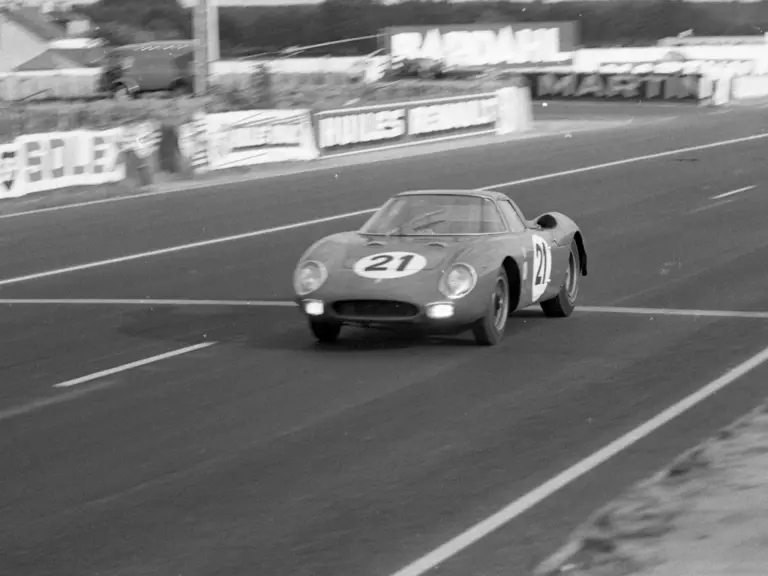
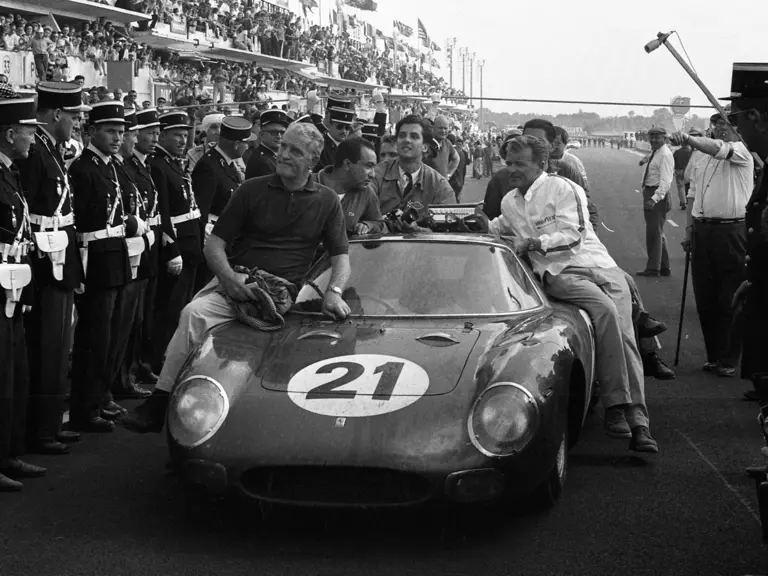
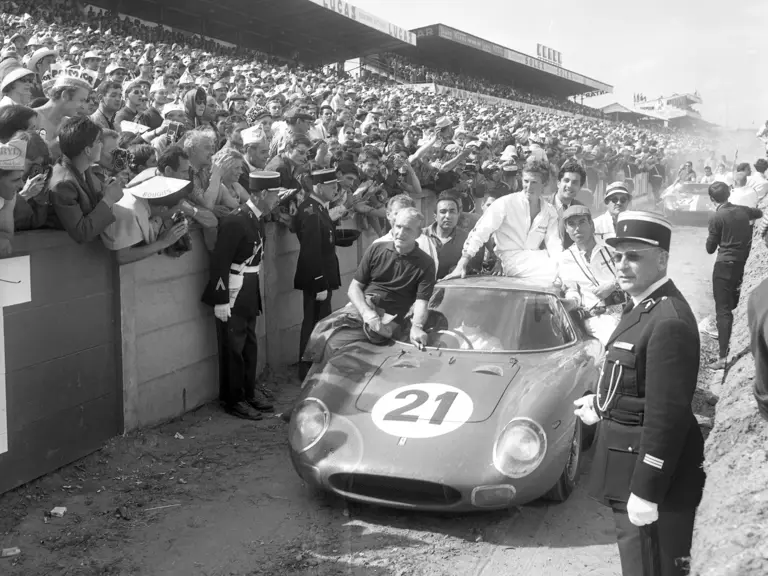


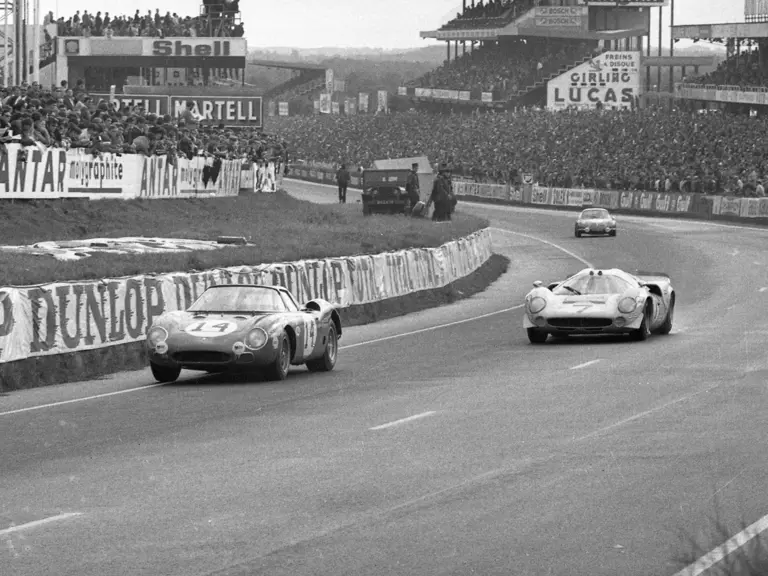
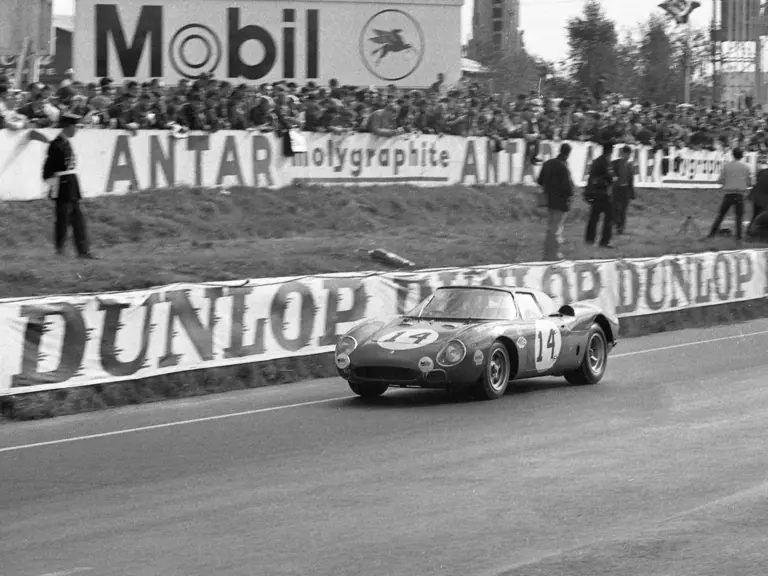
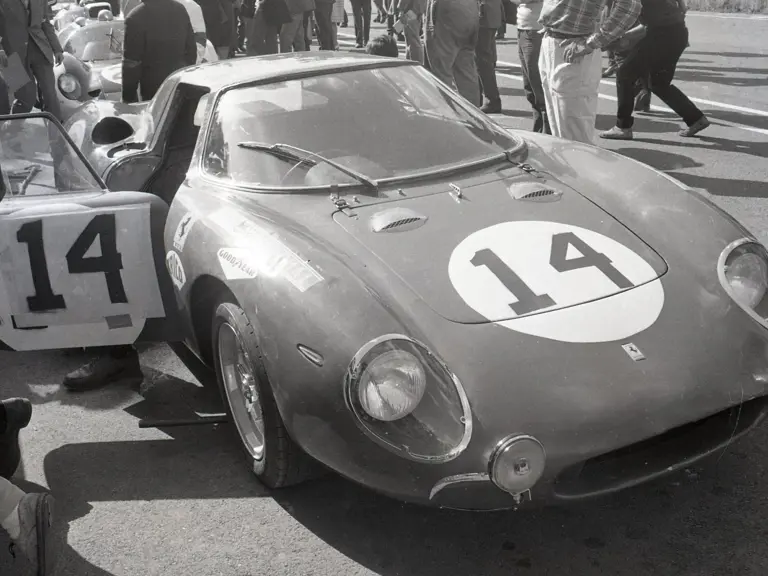
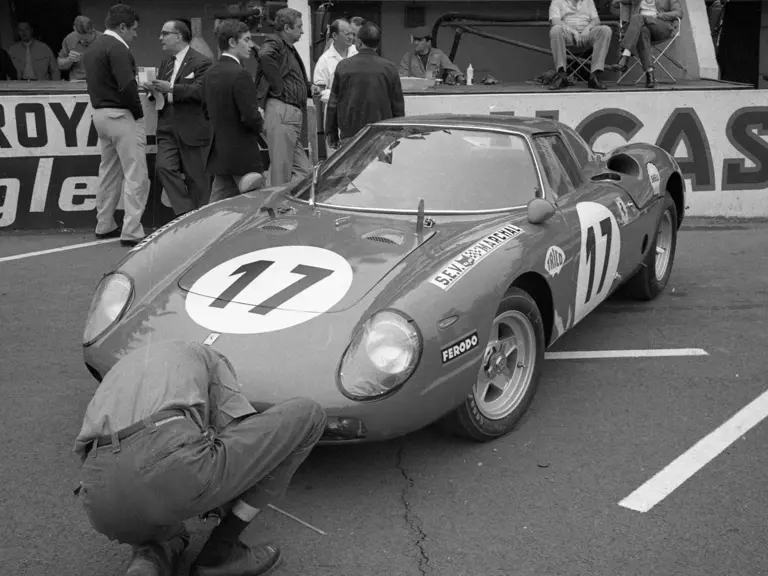

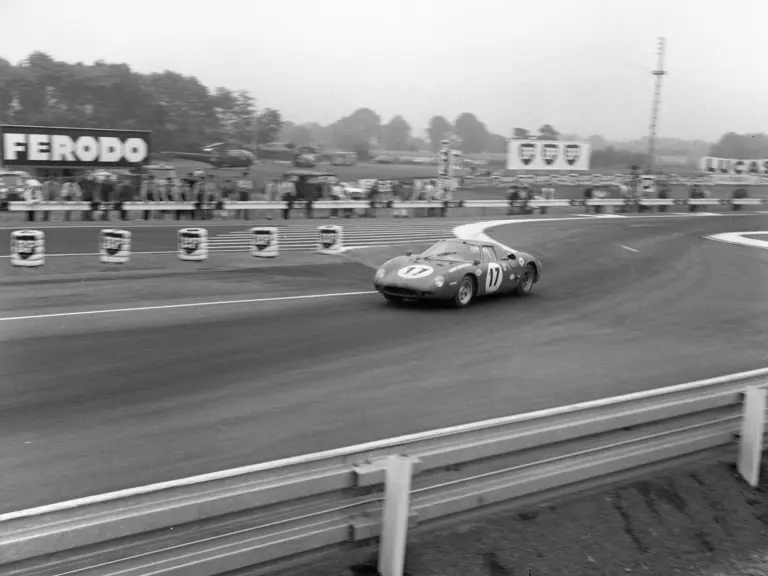
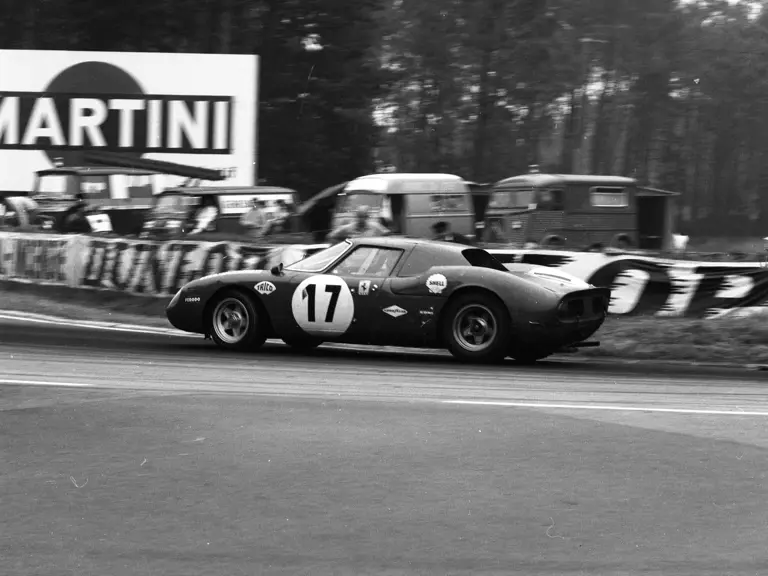
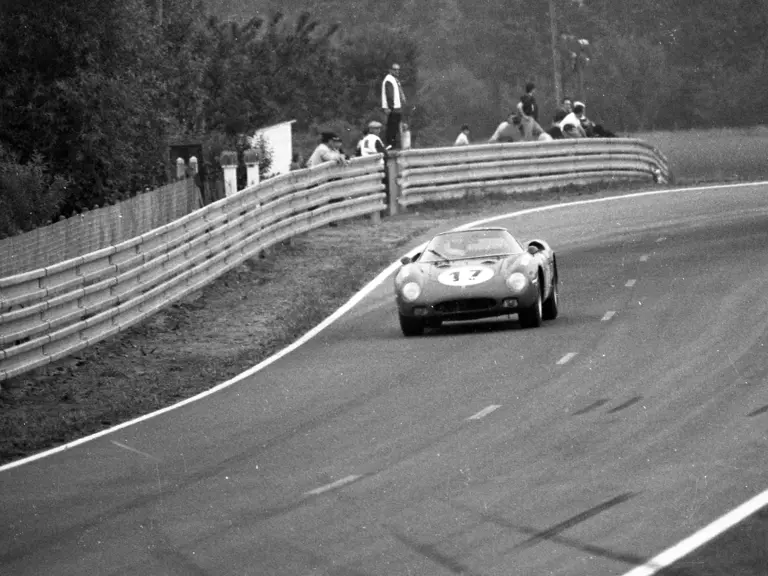
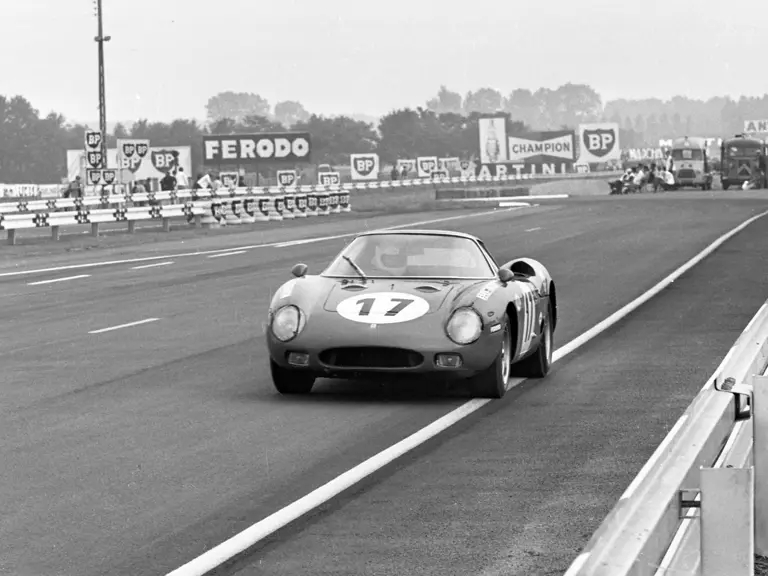
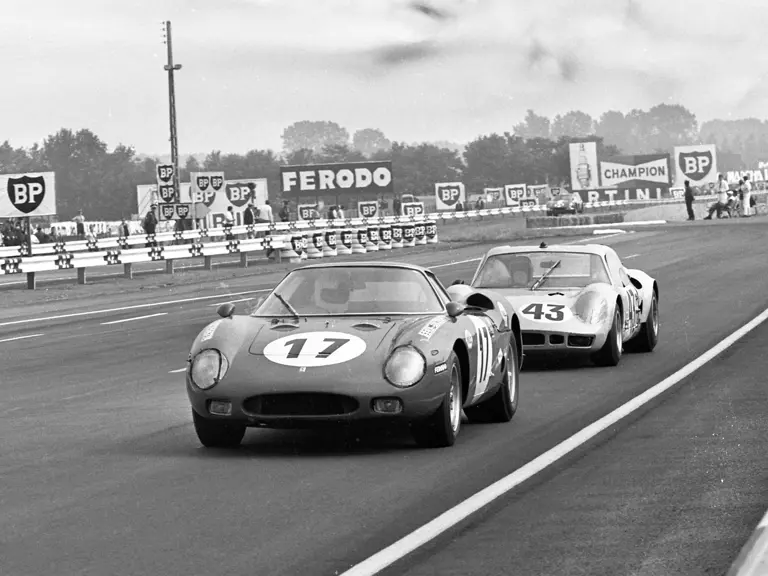
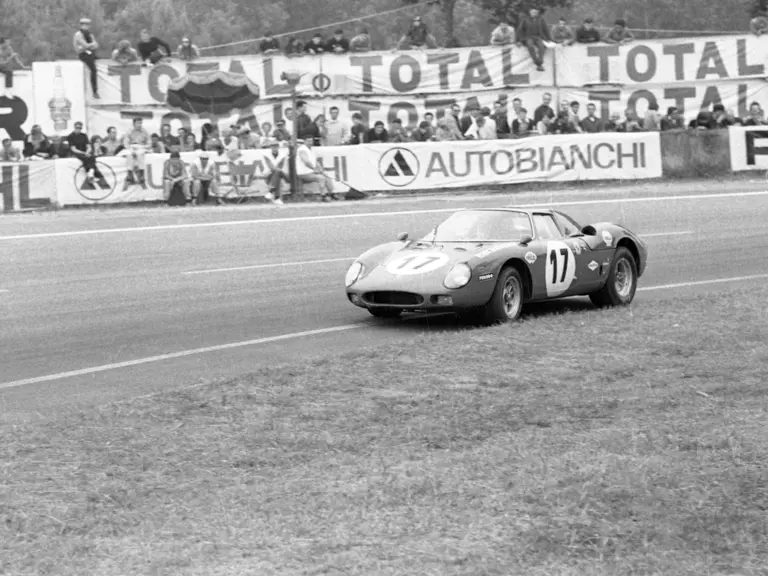

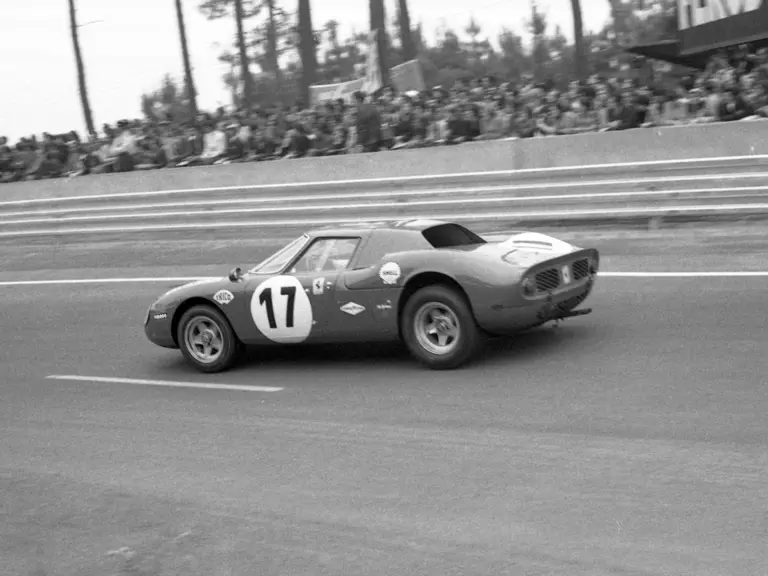

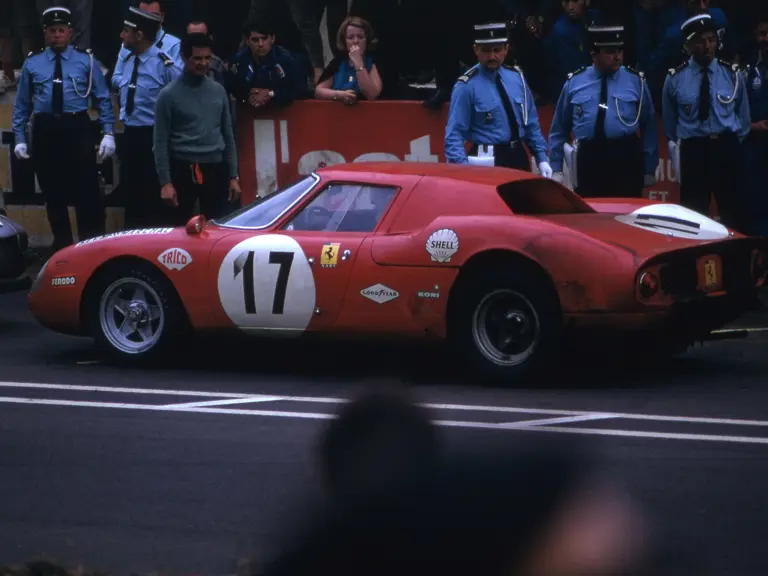
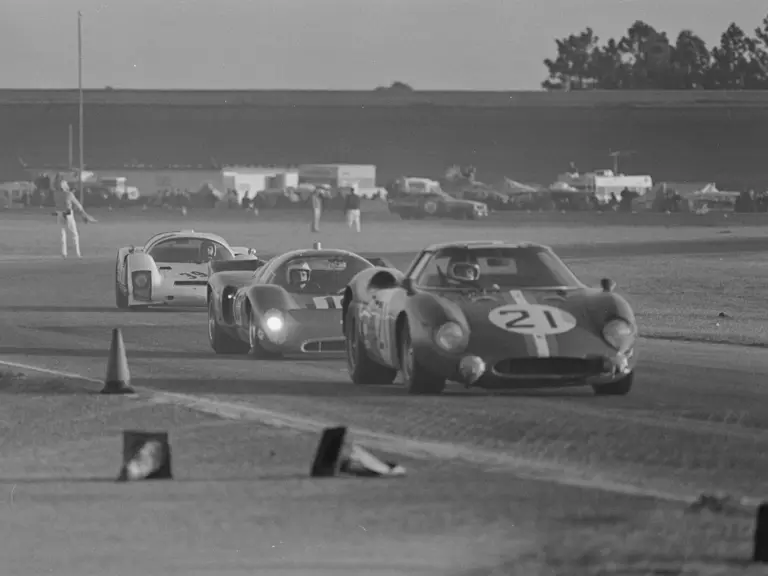
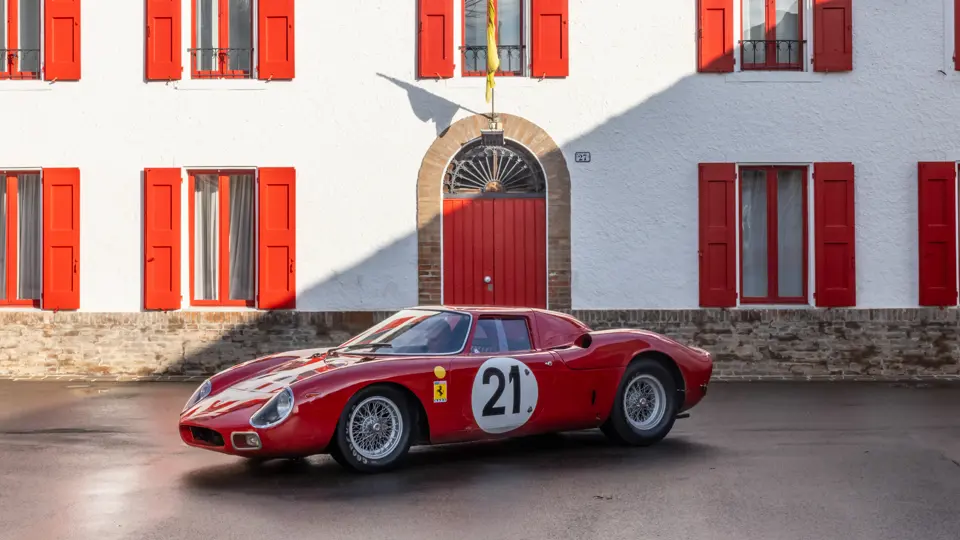
 | Paris, France
| Paris, France
